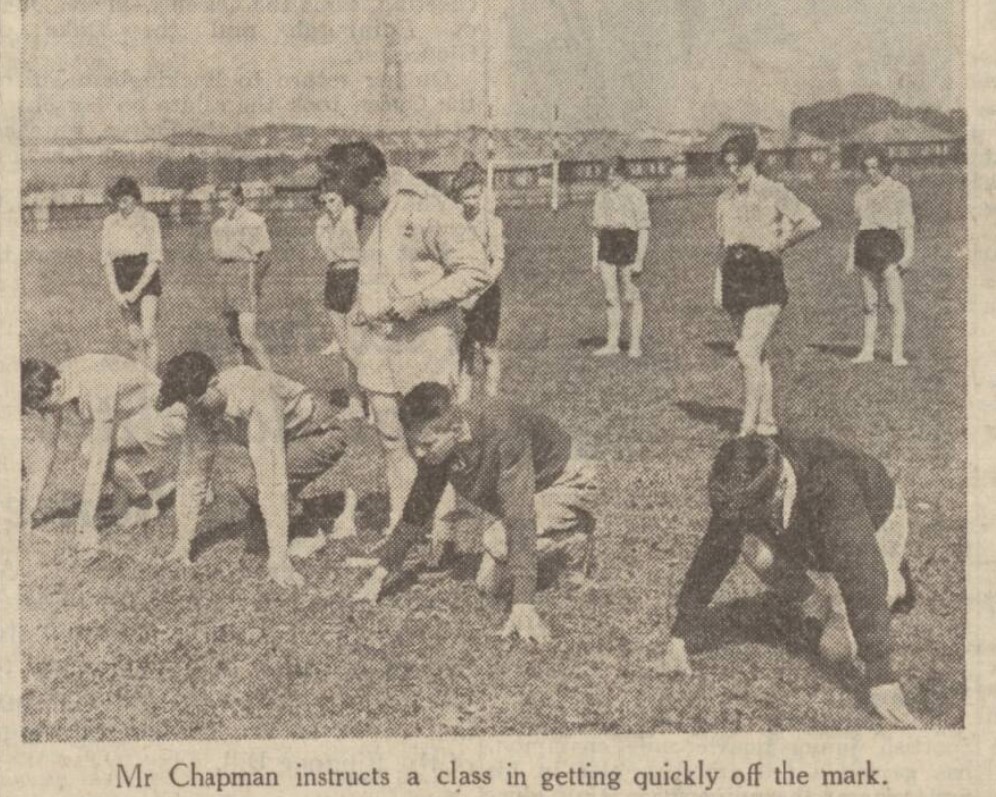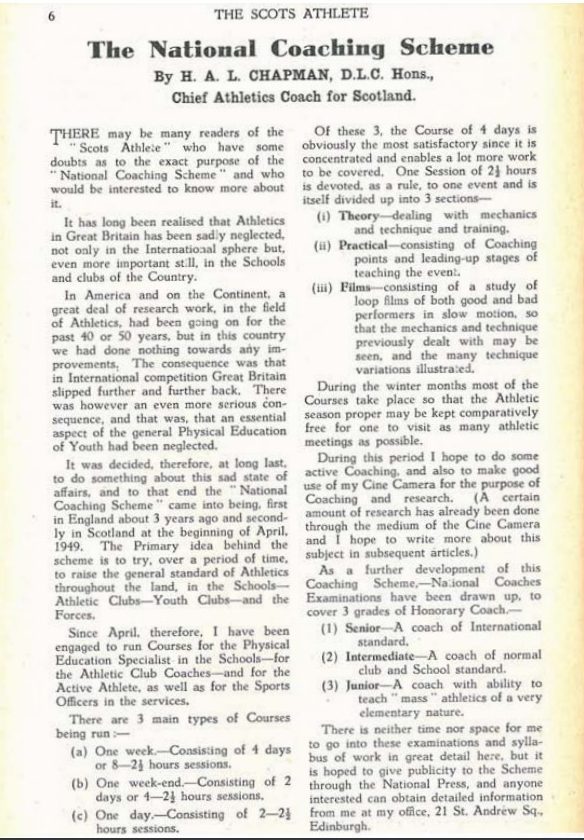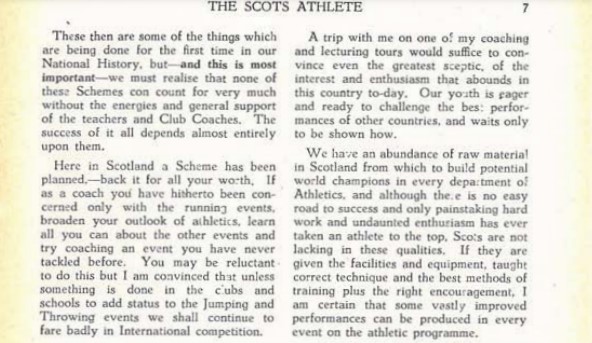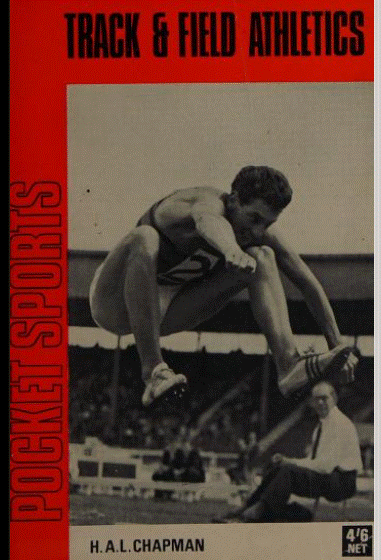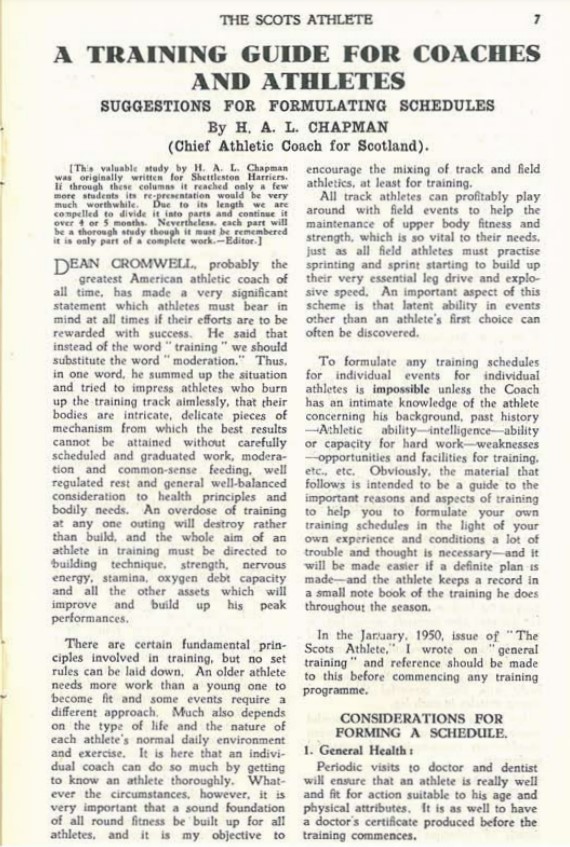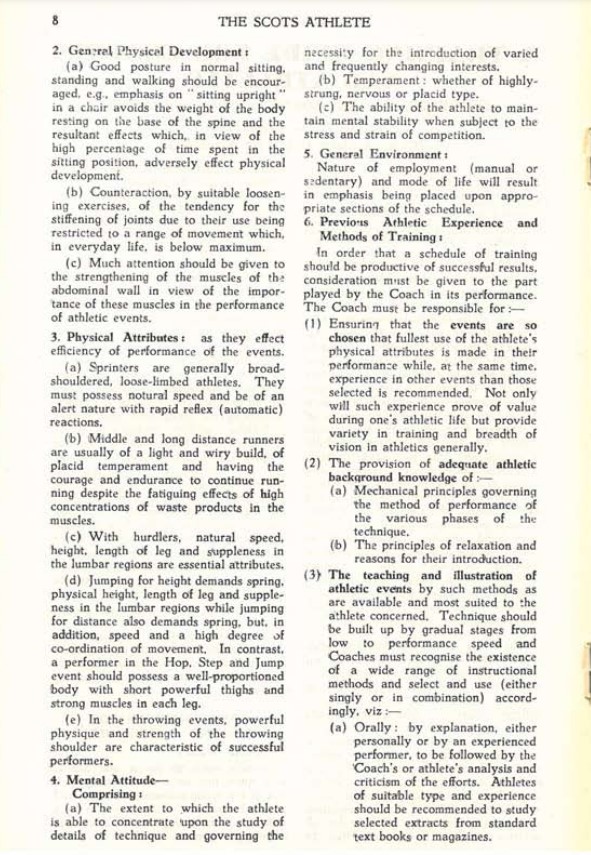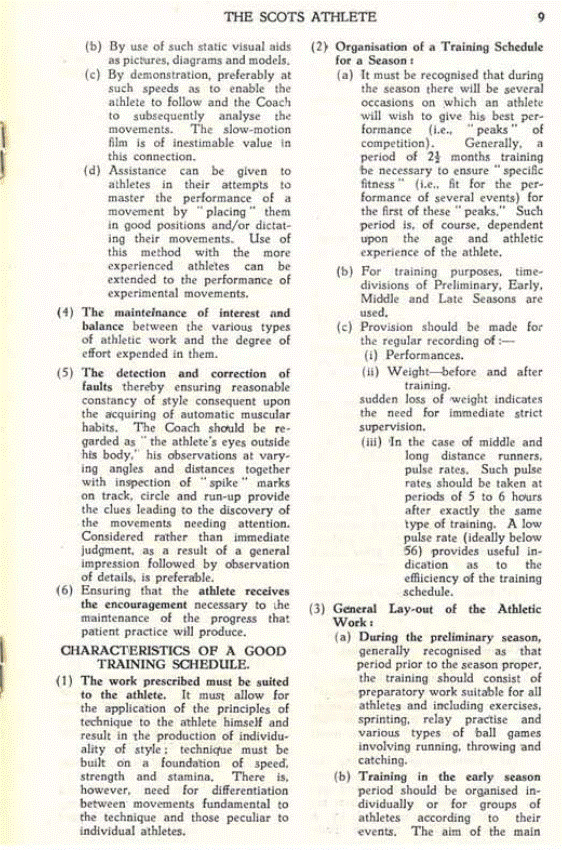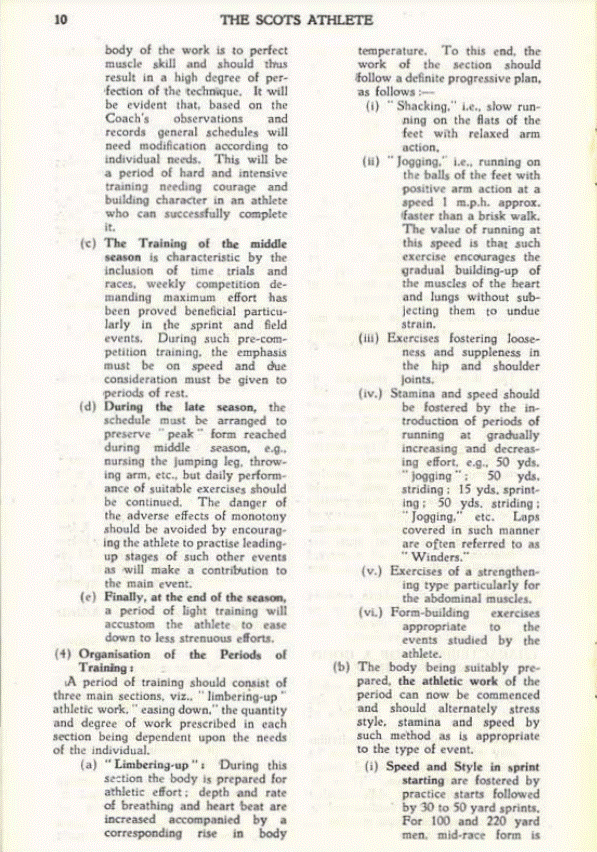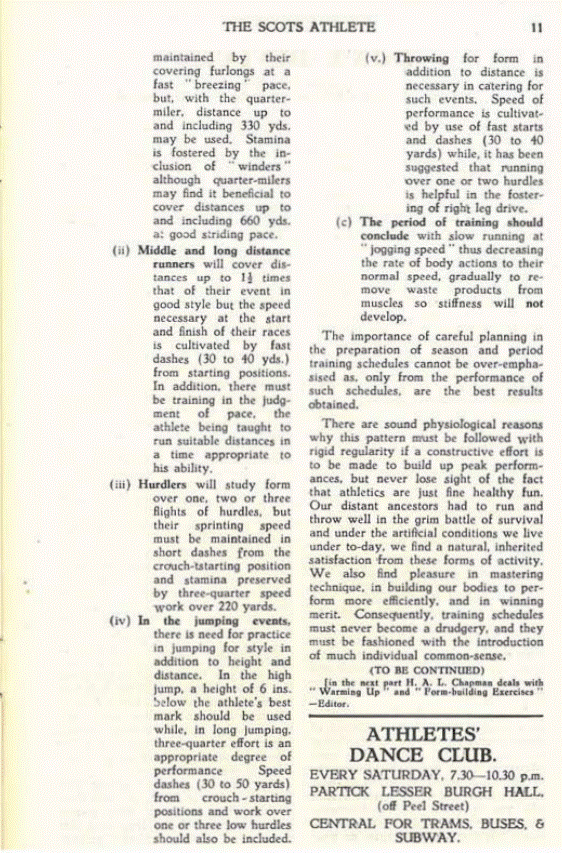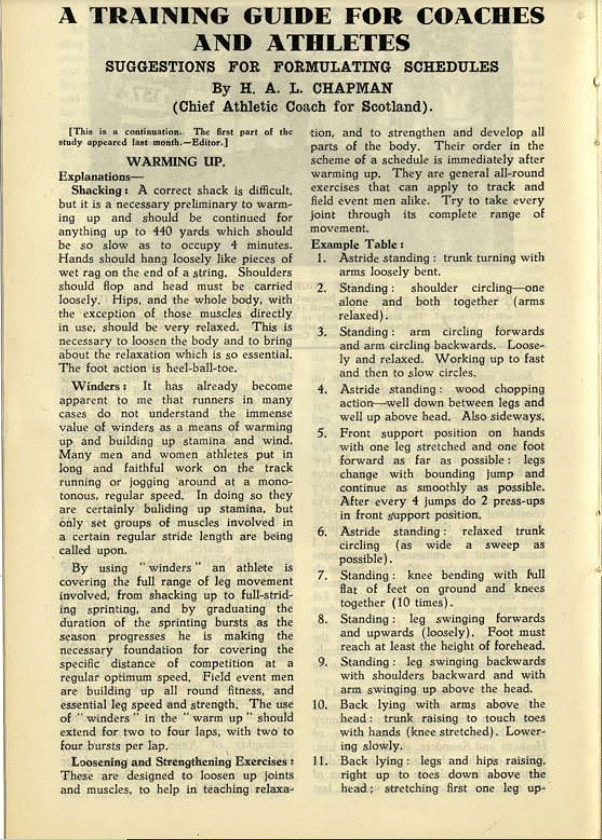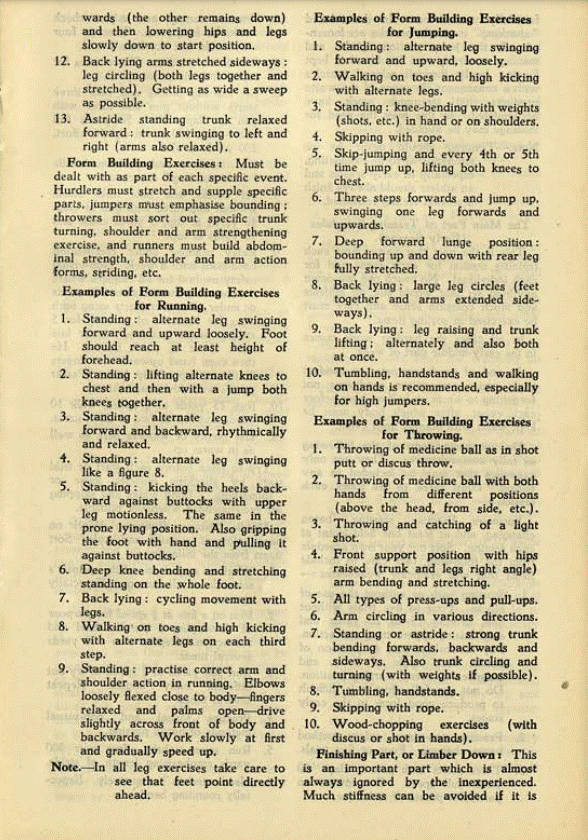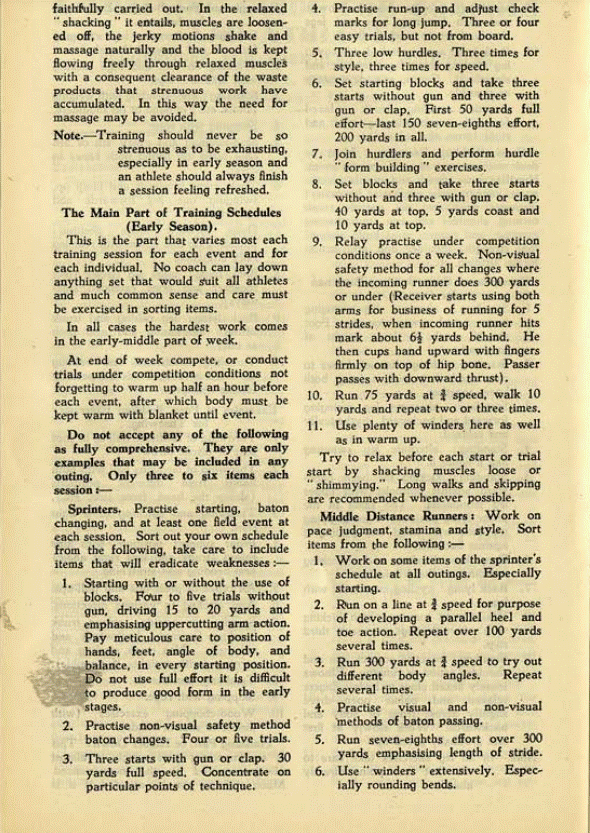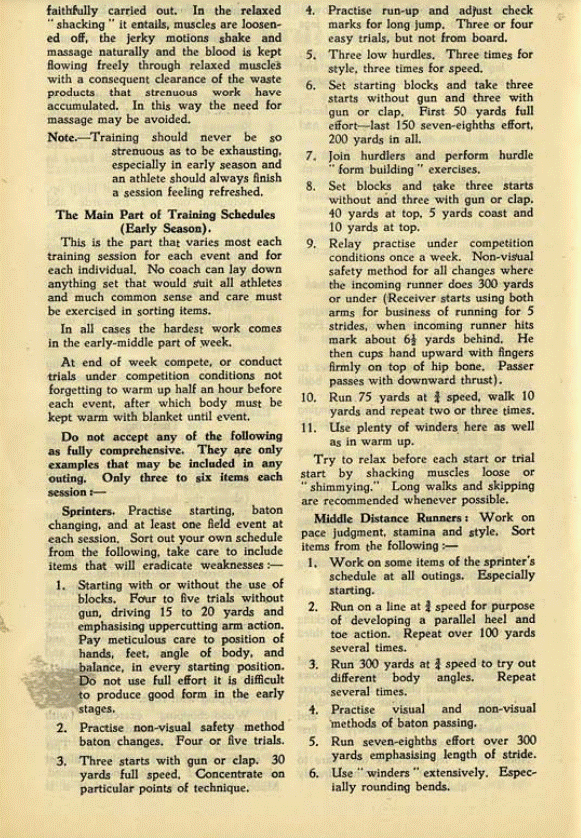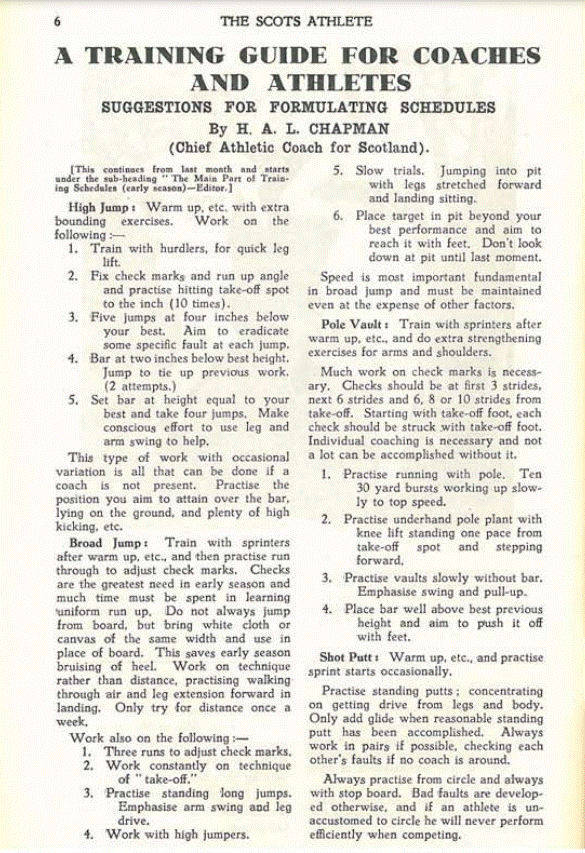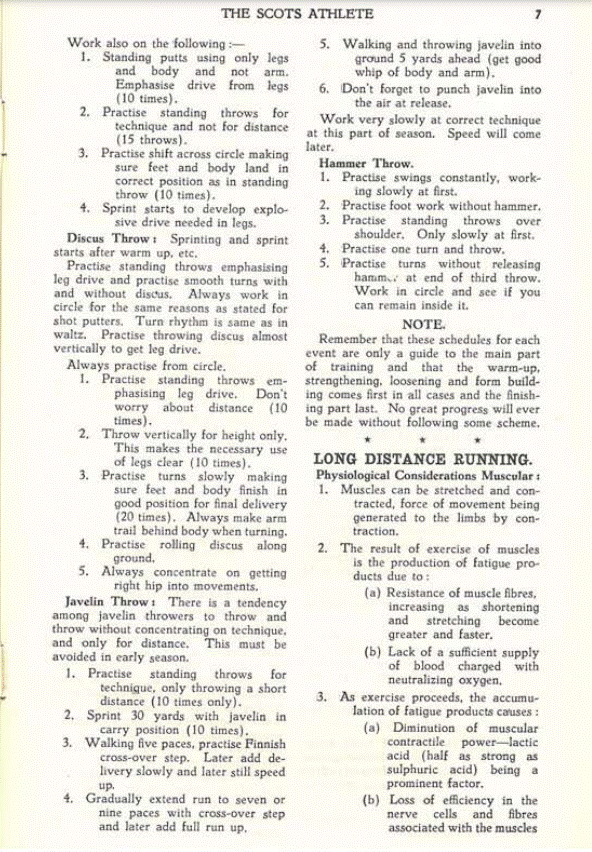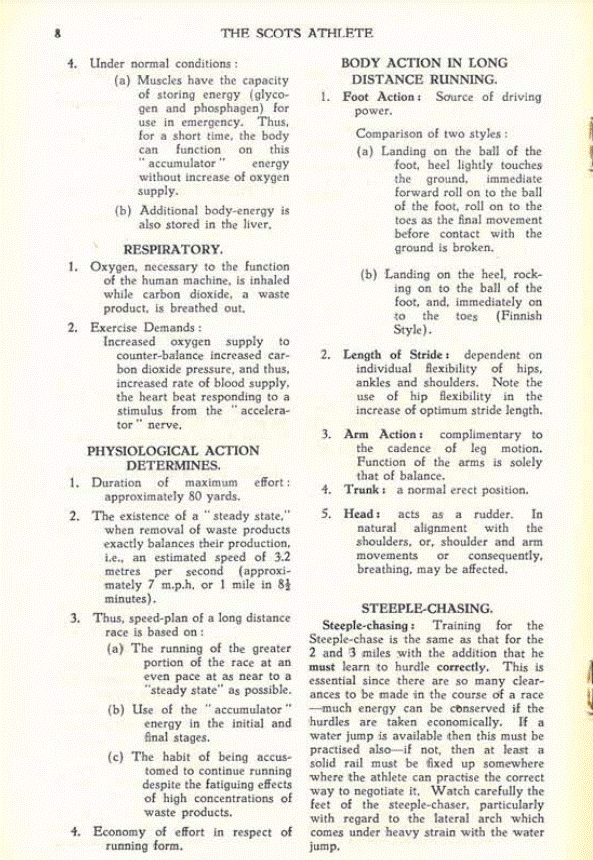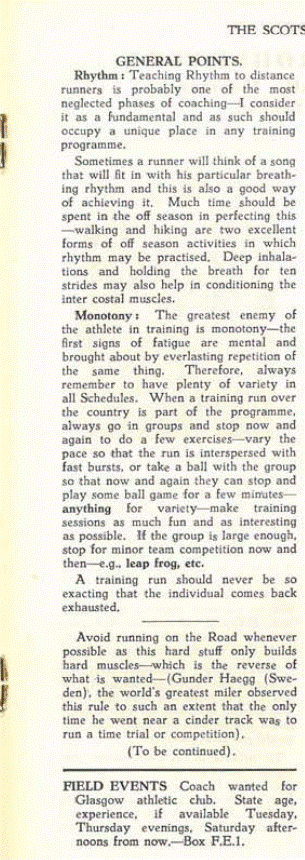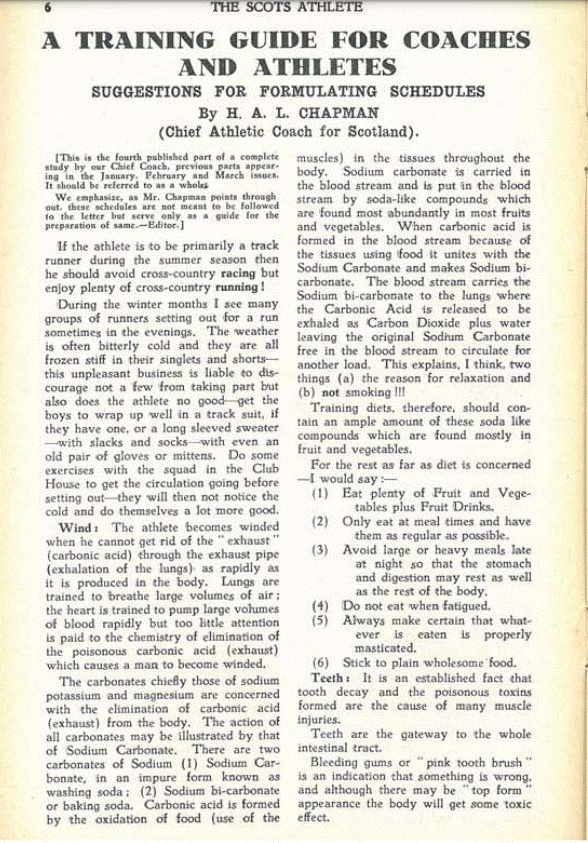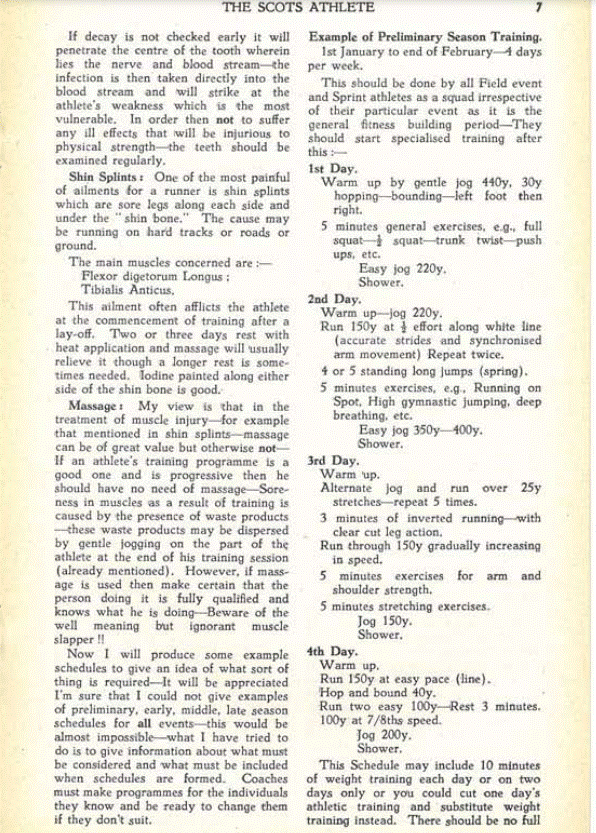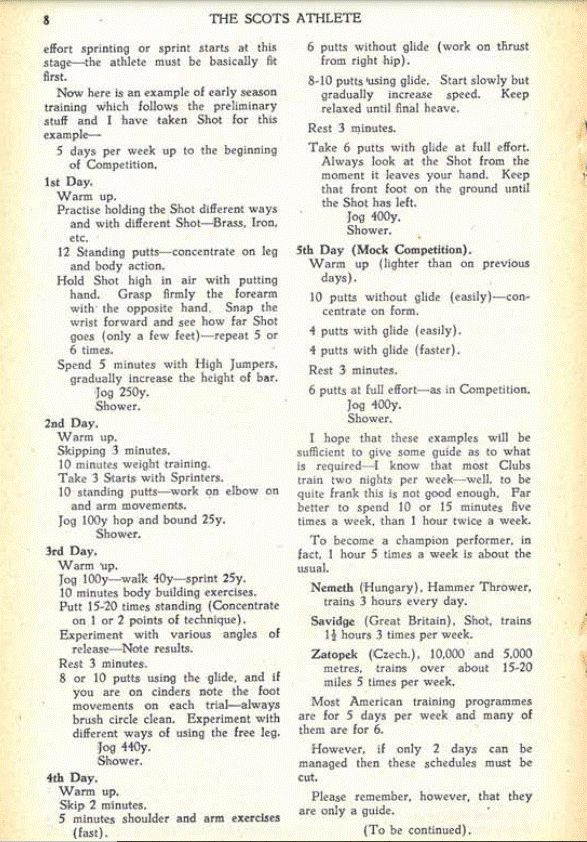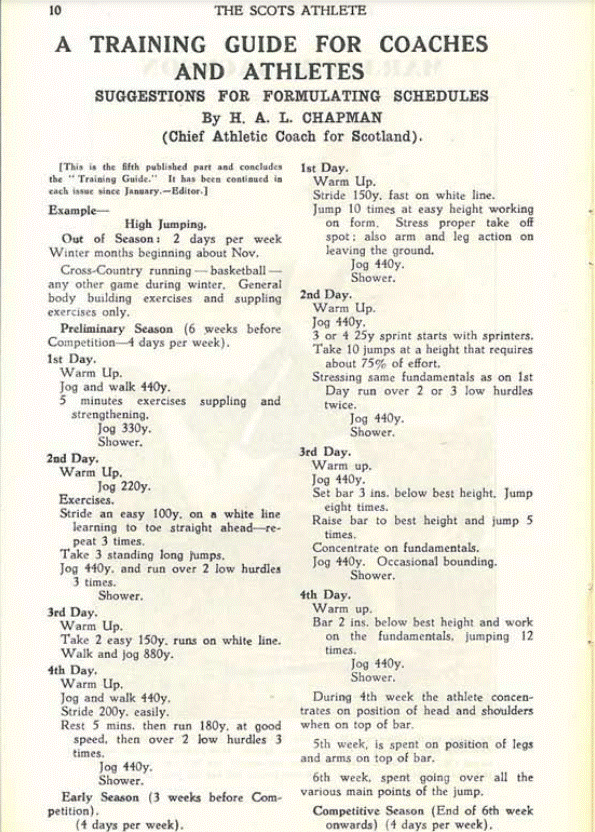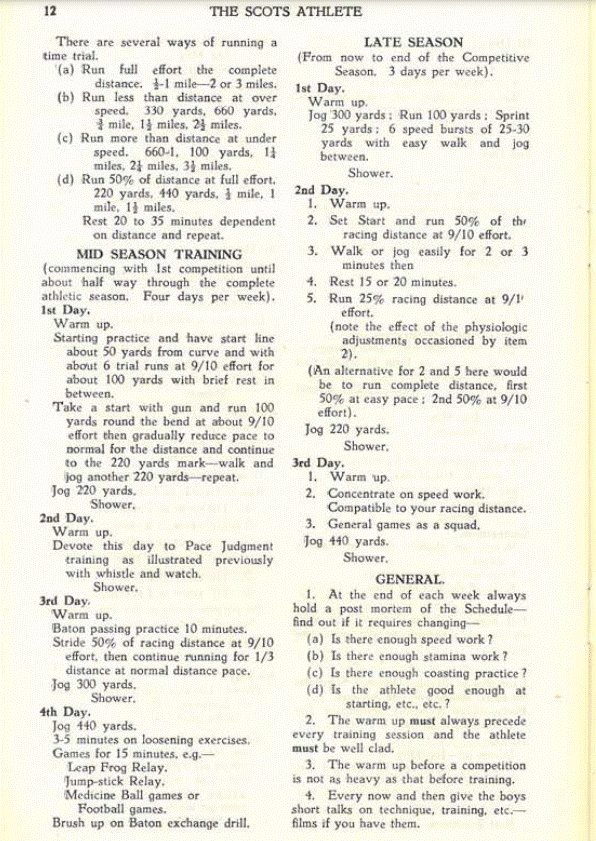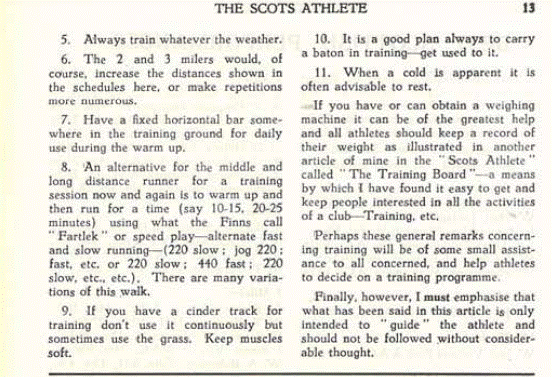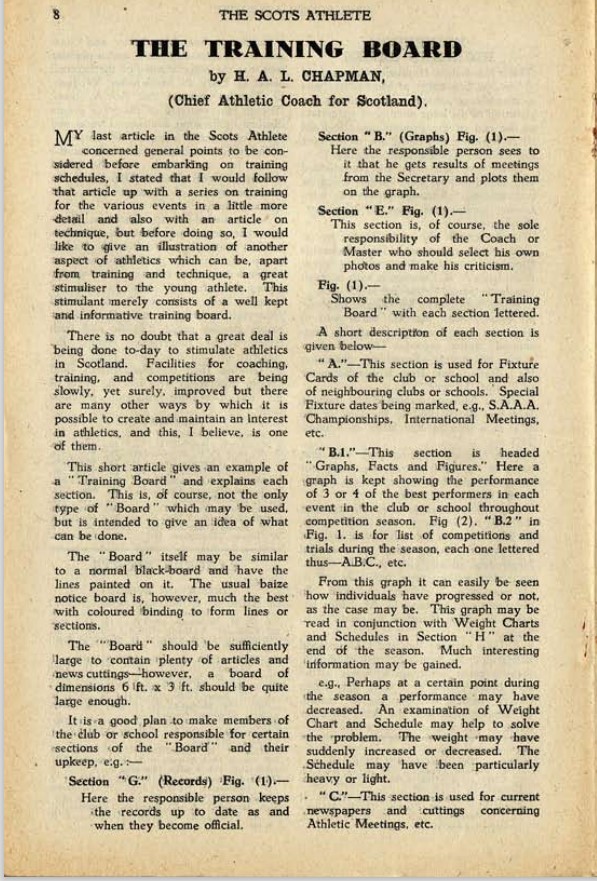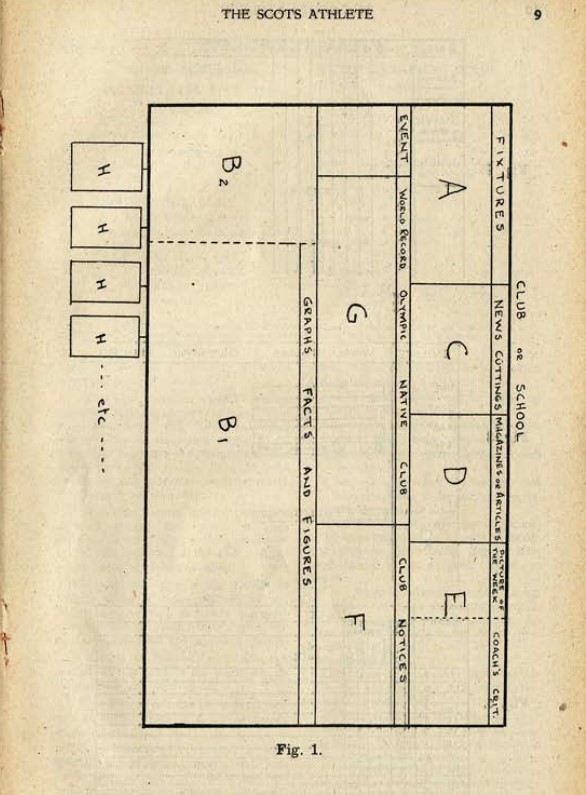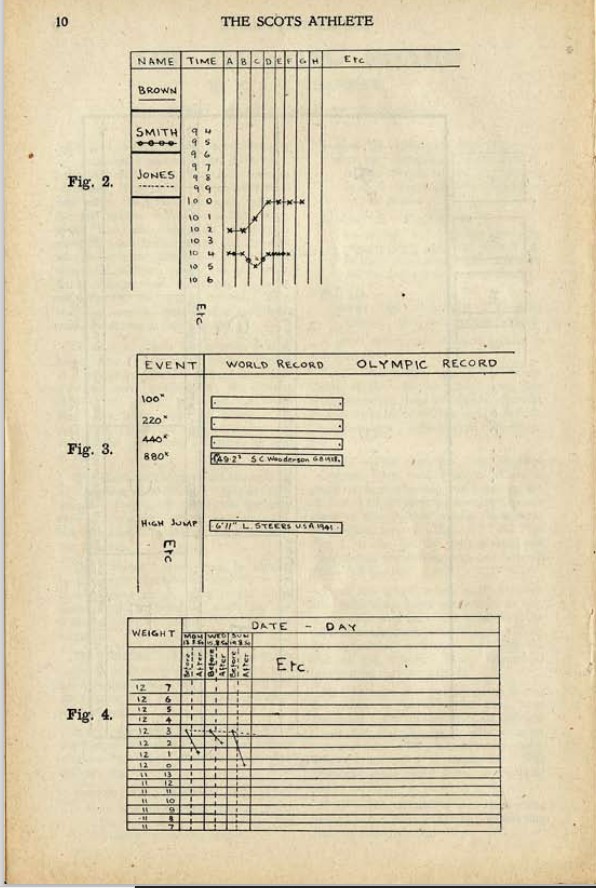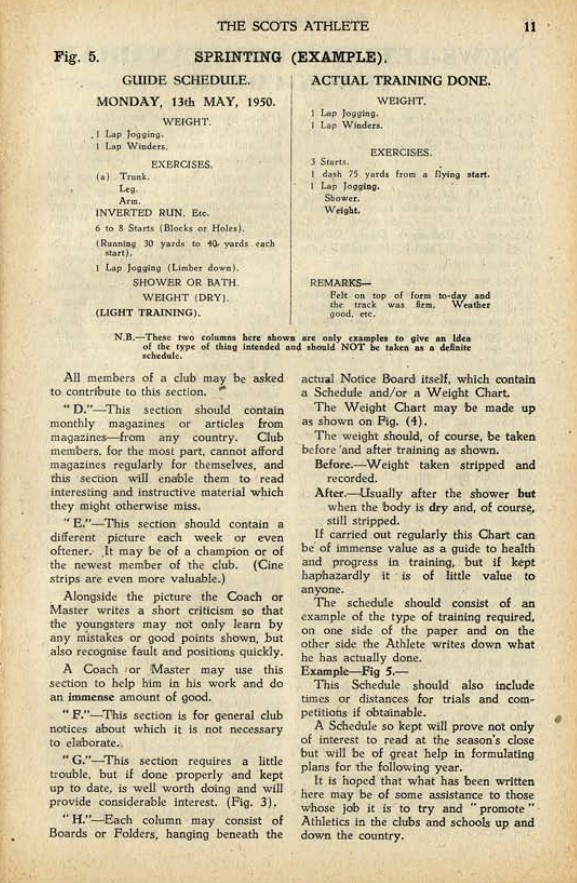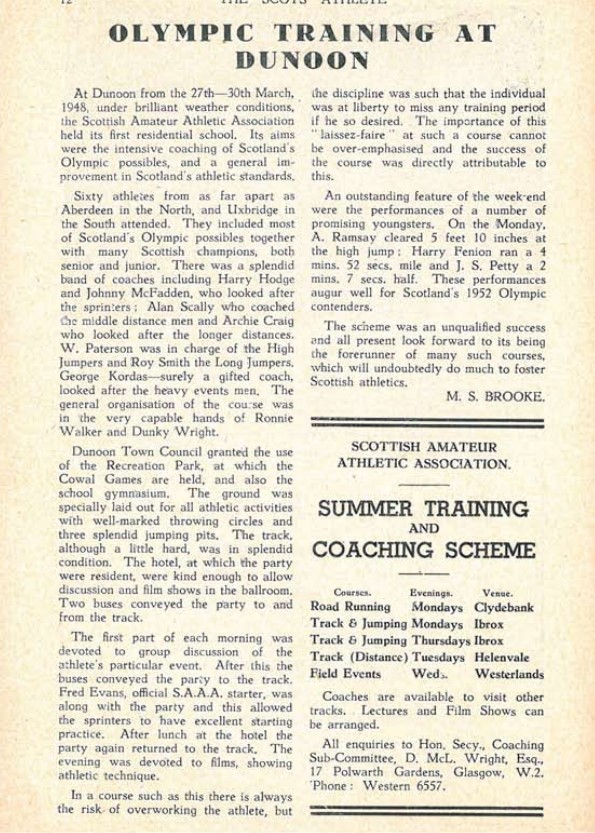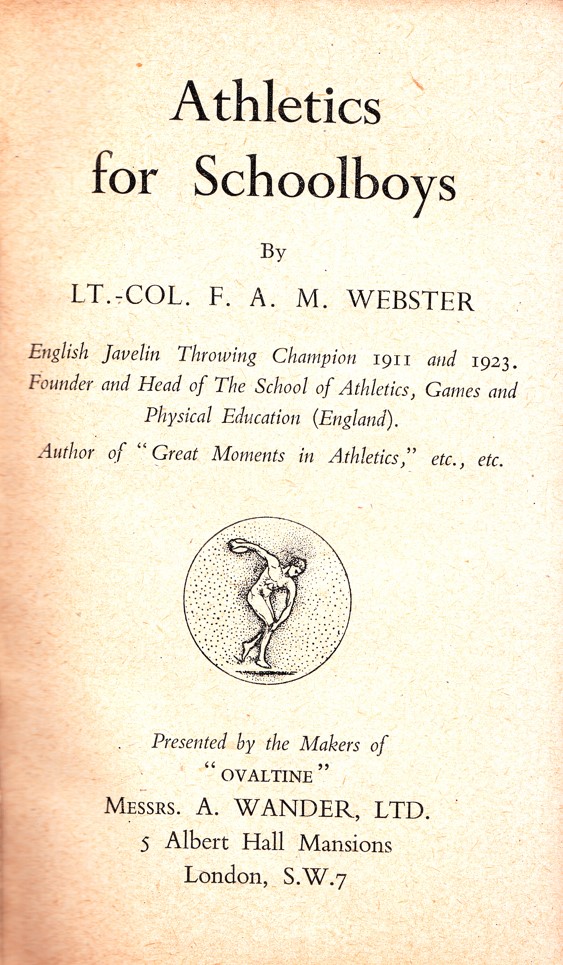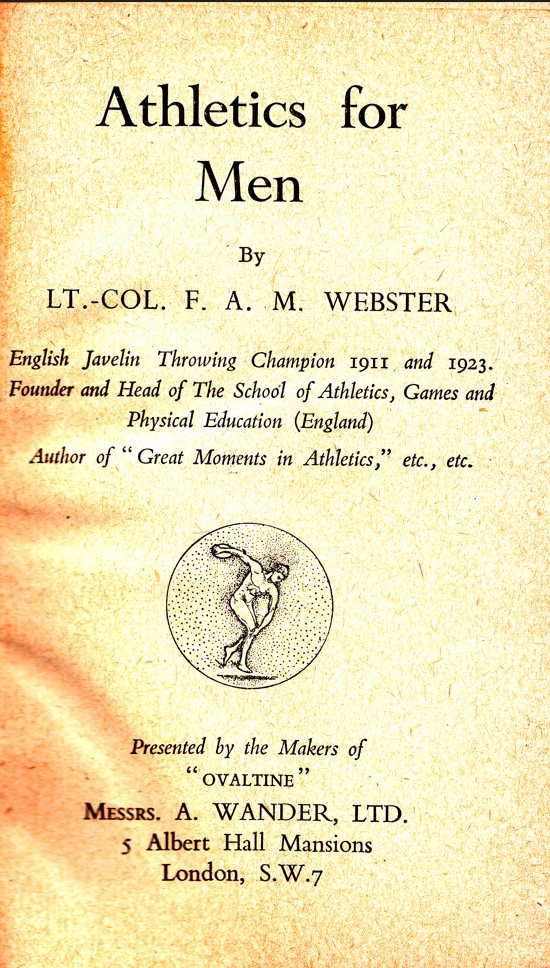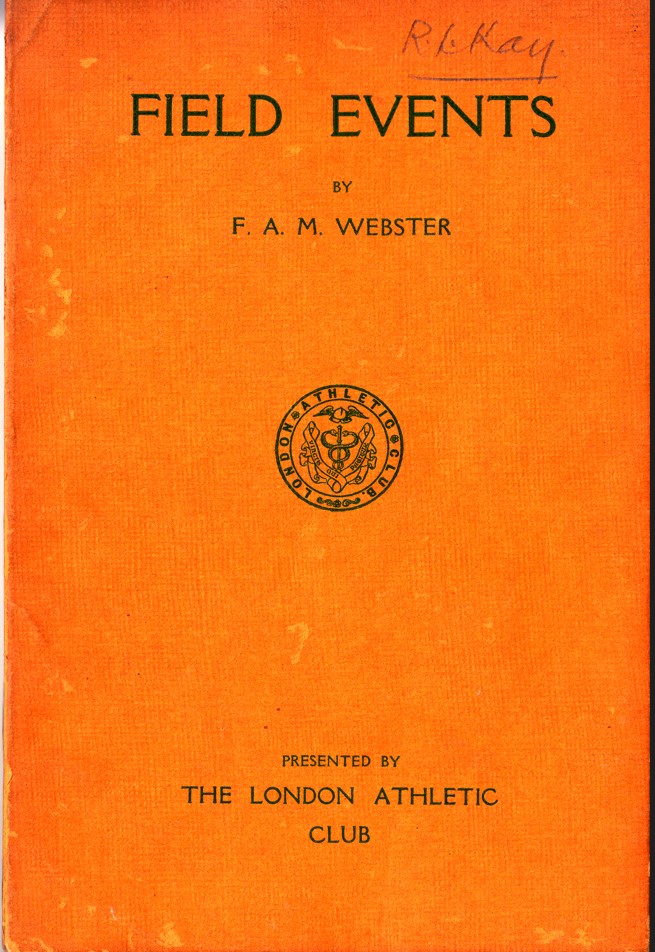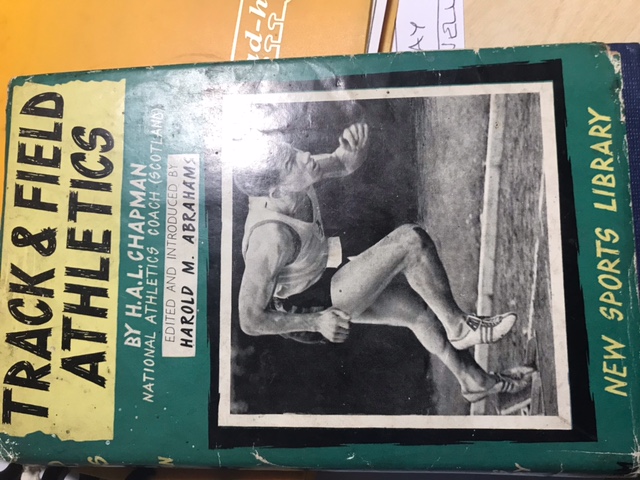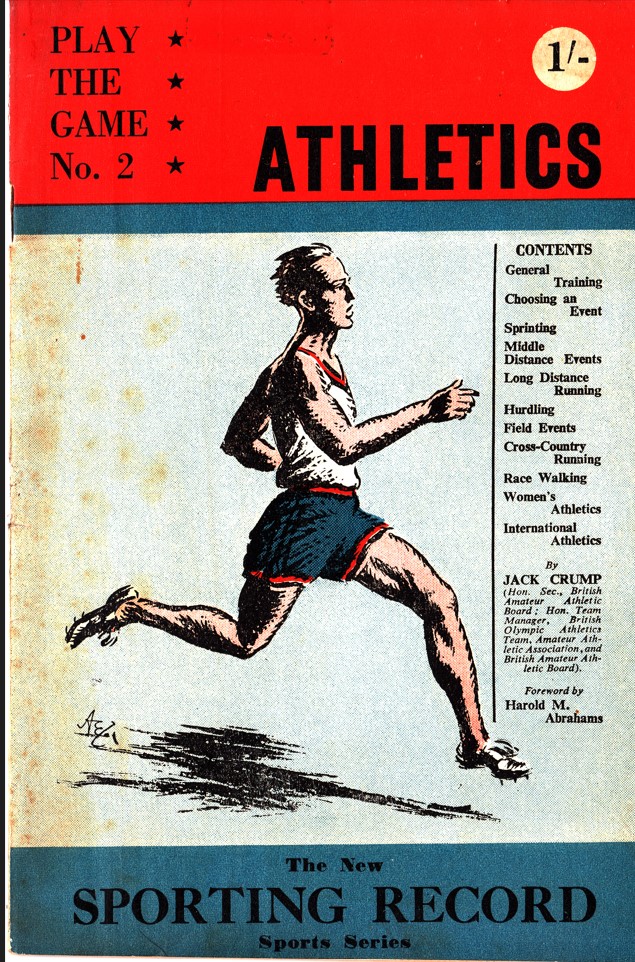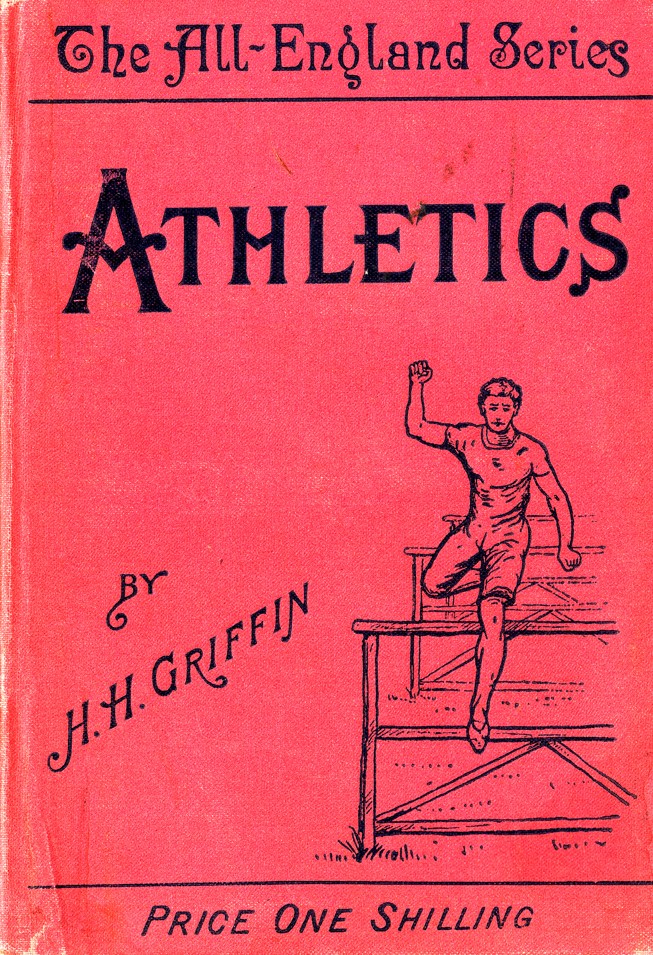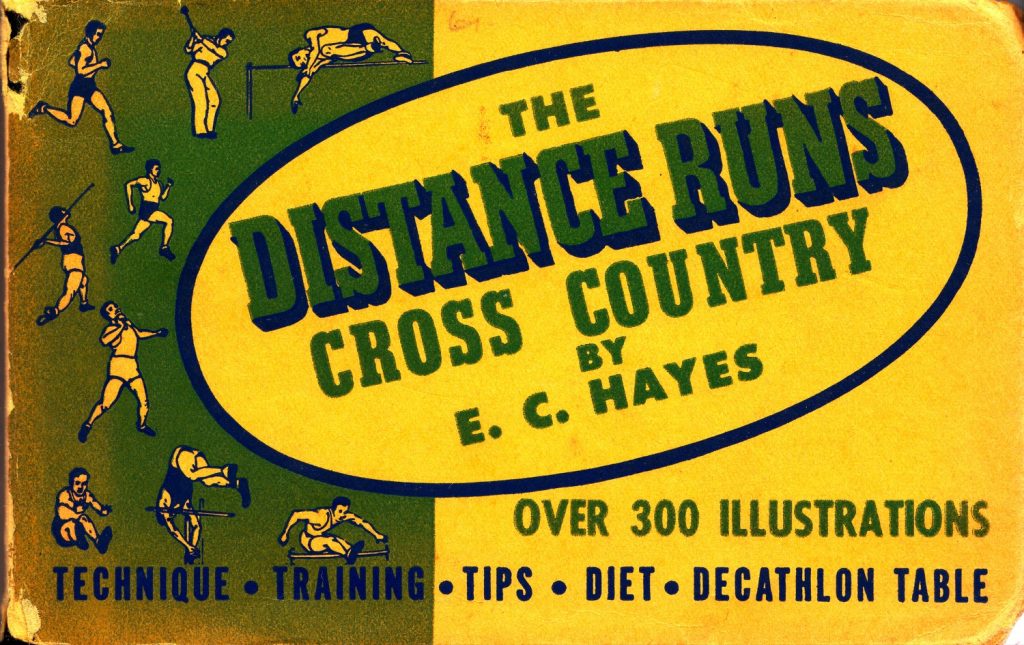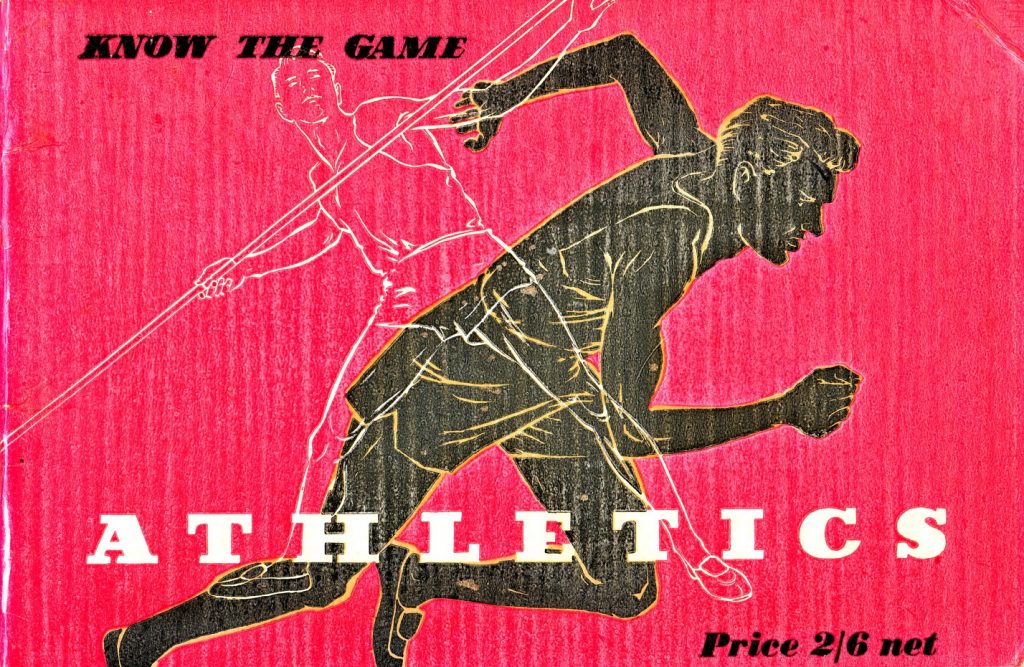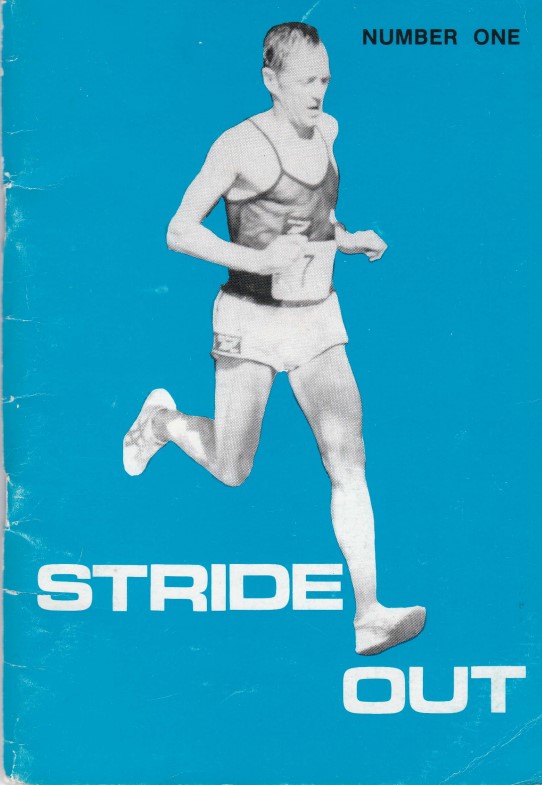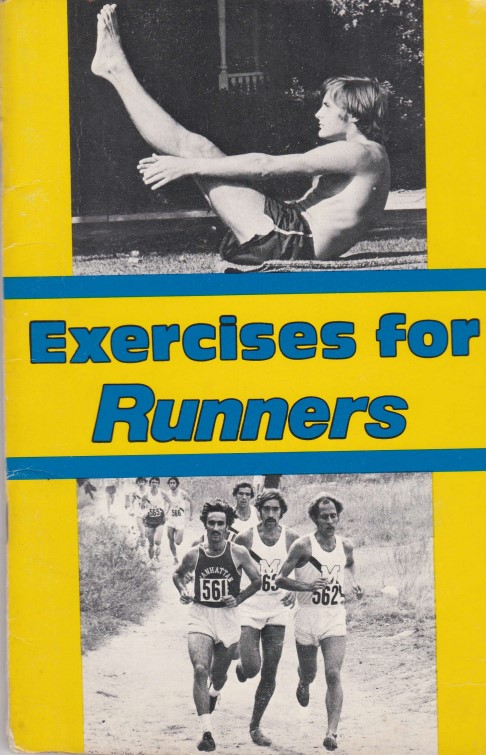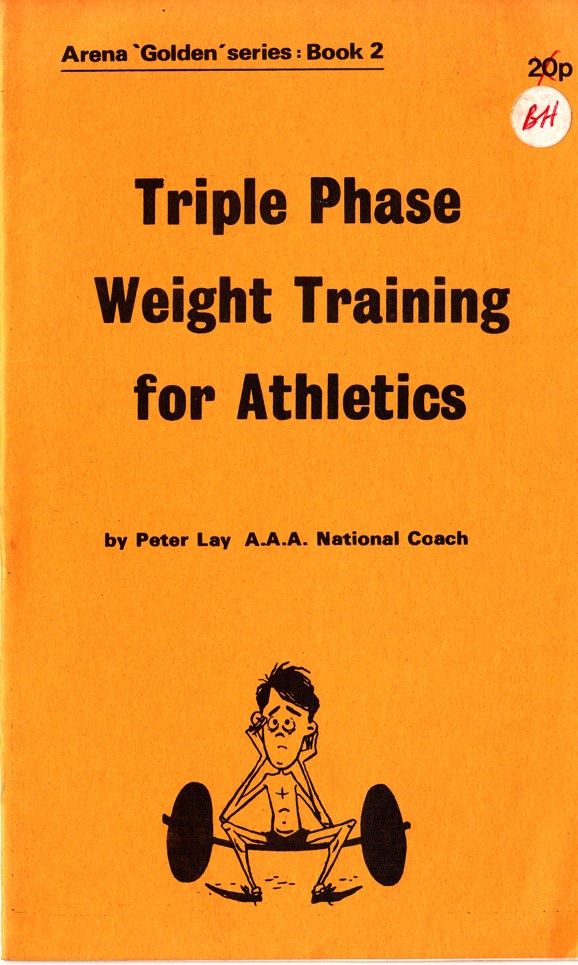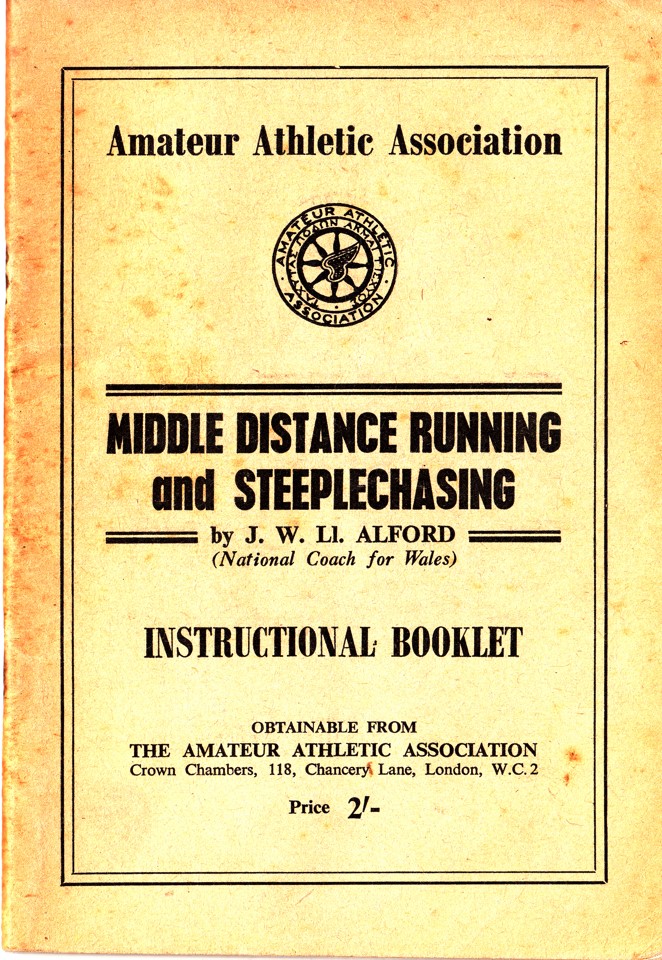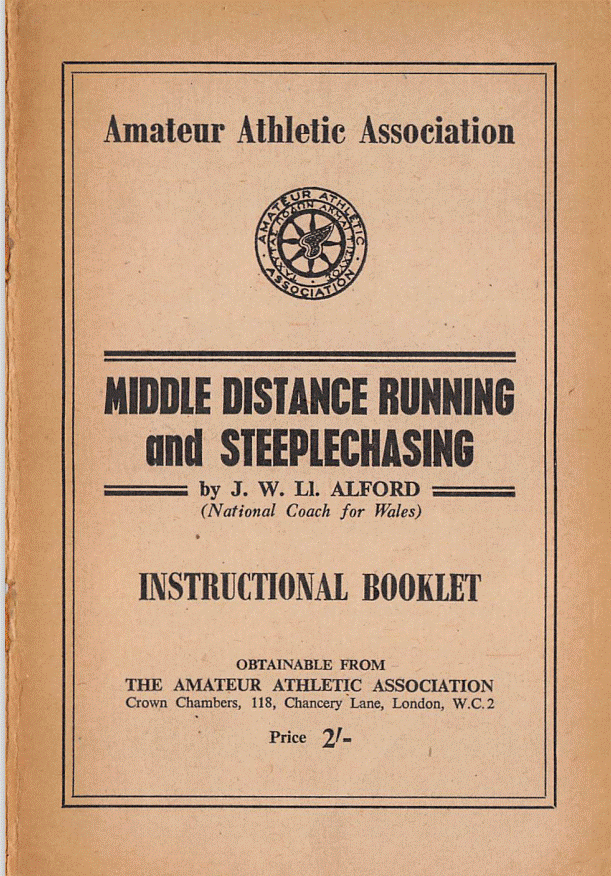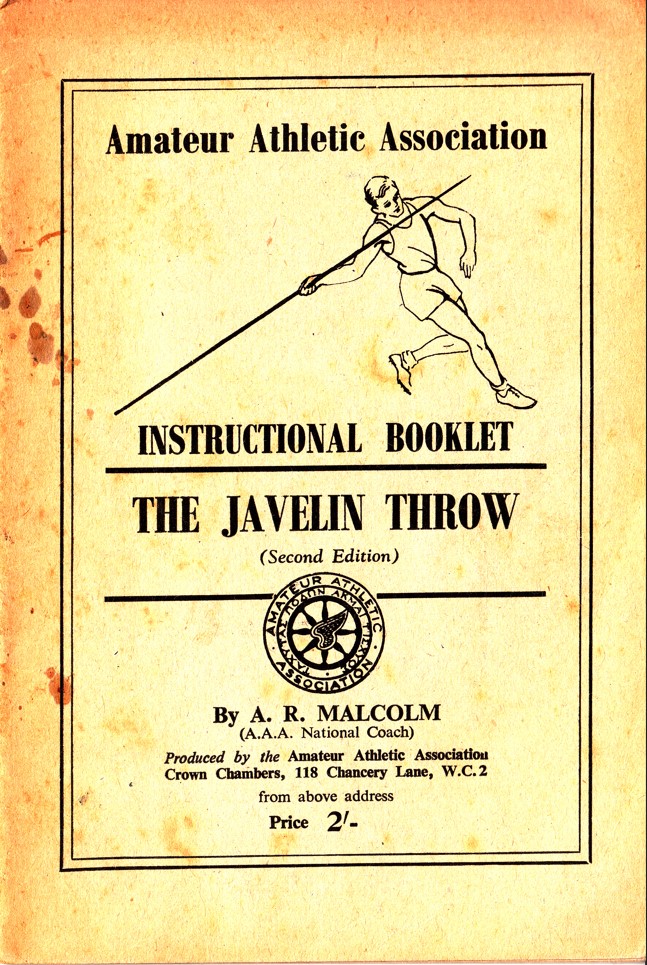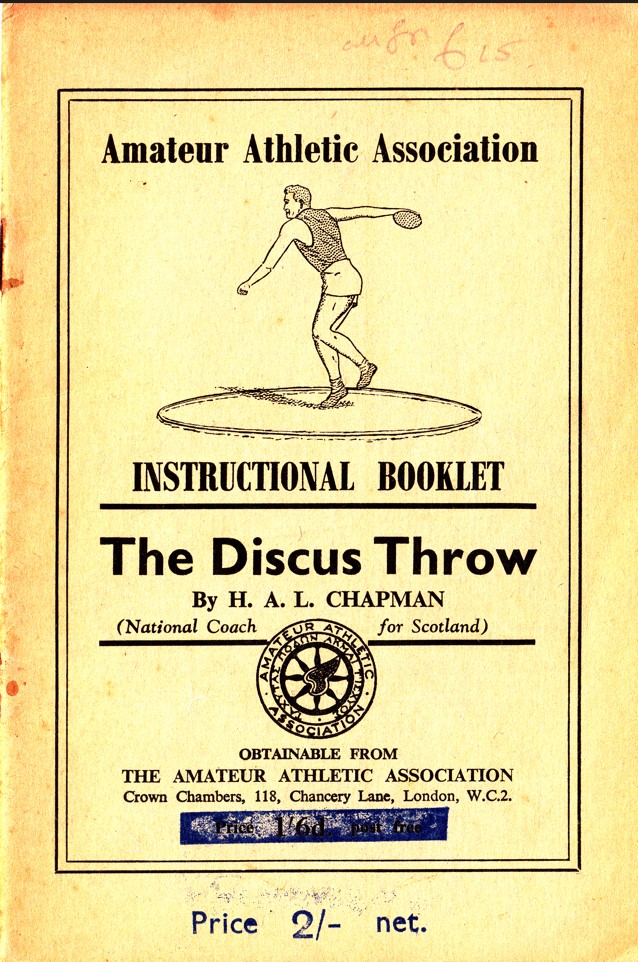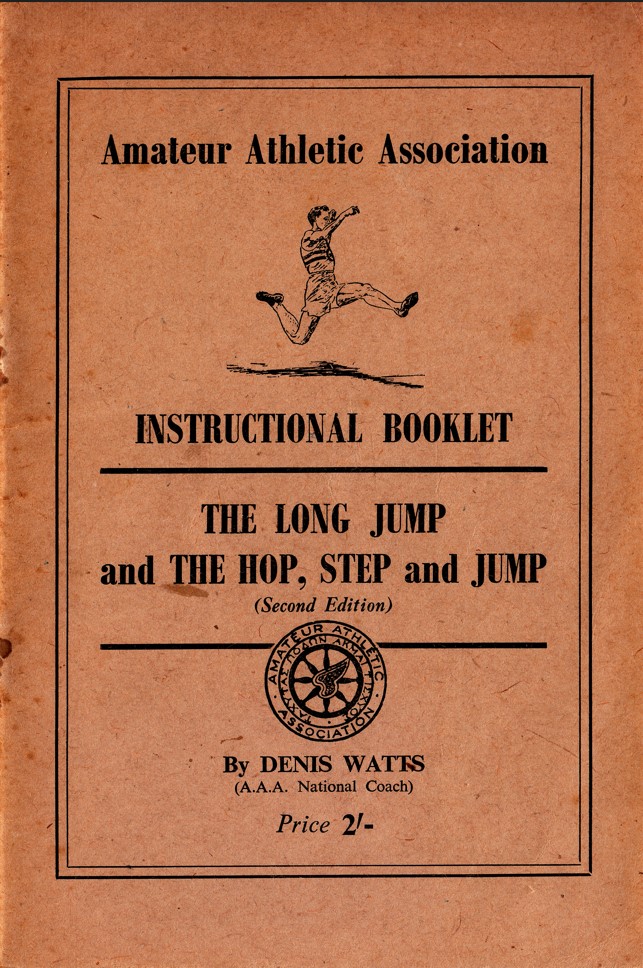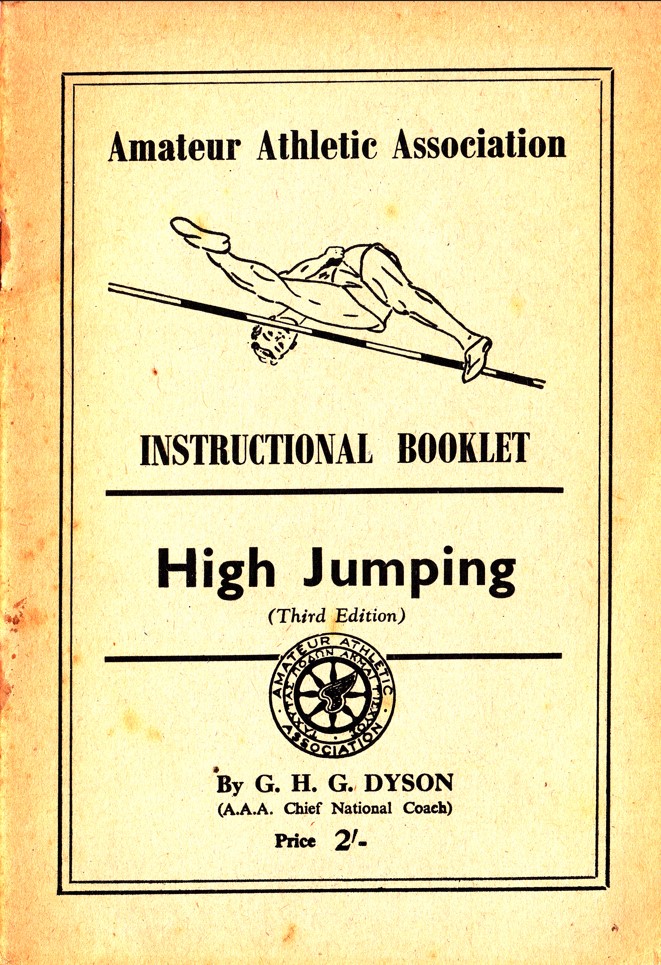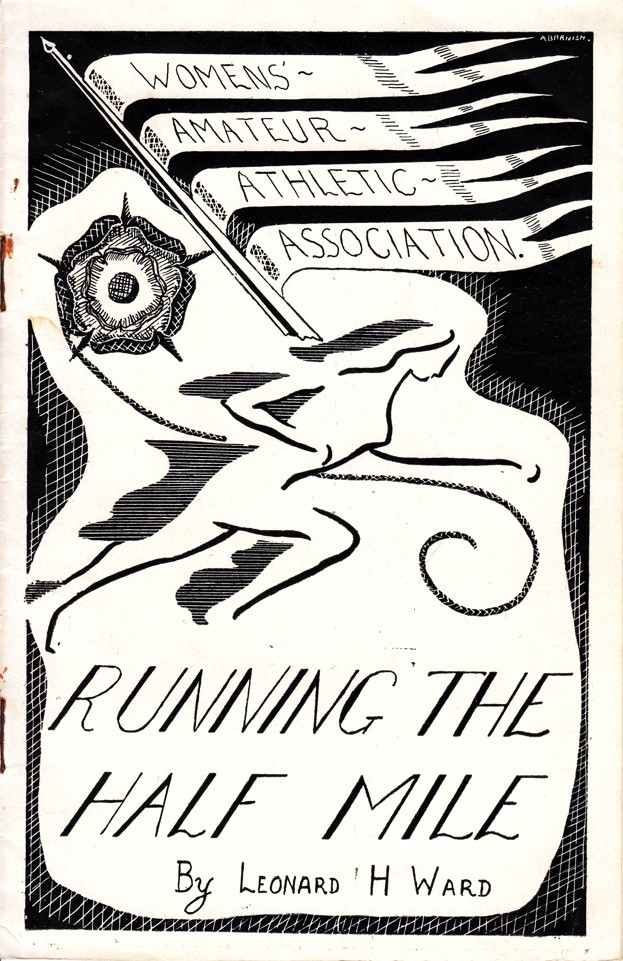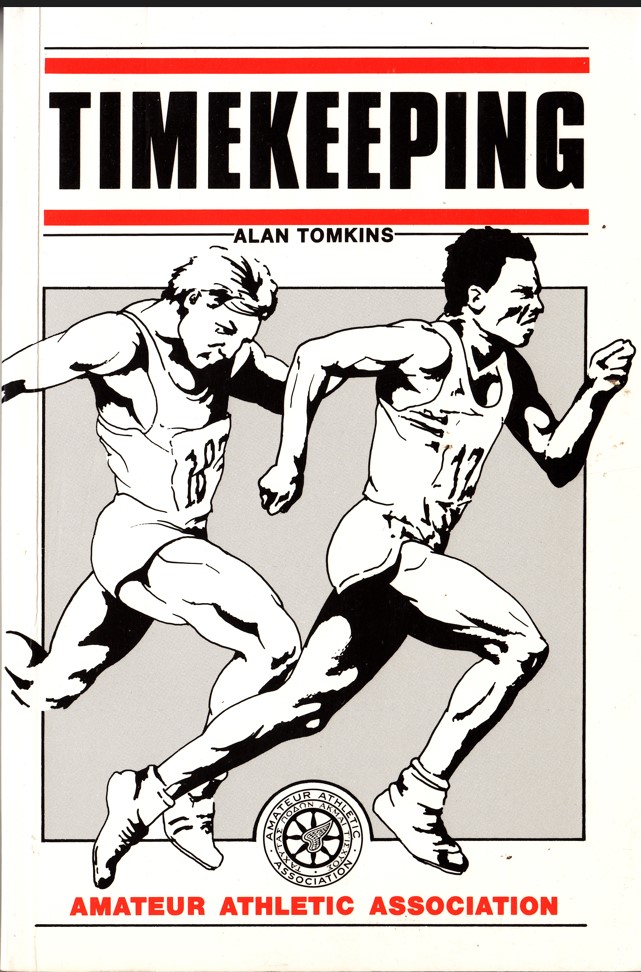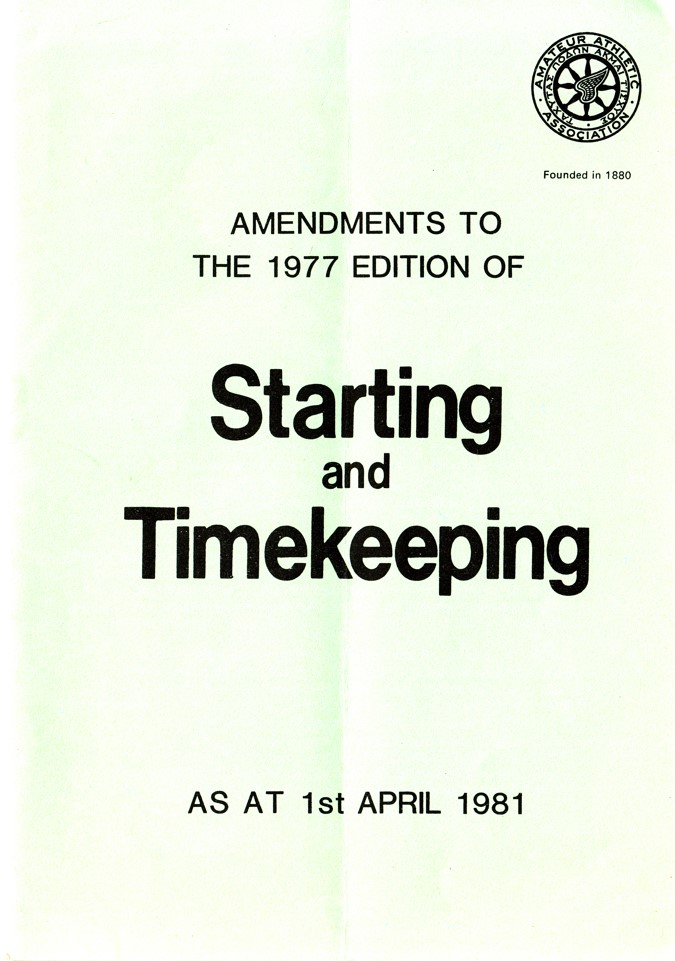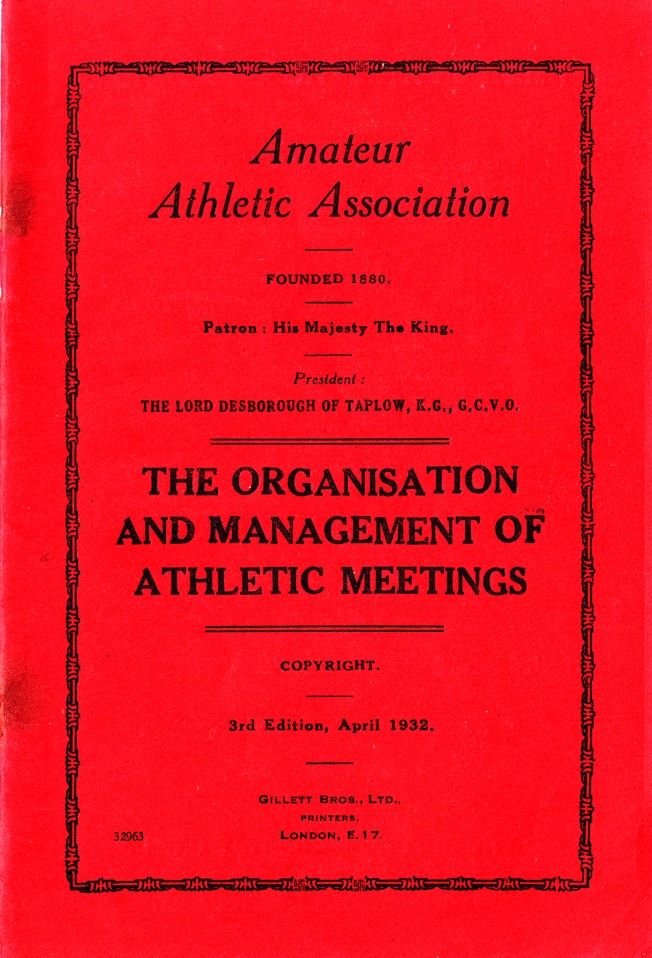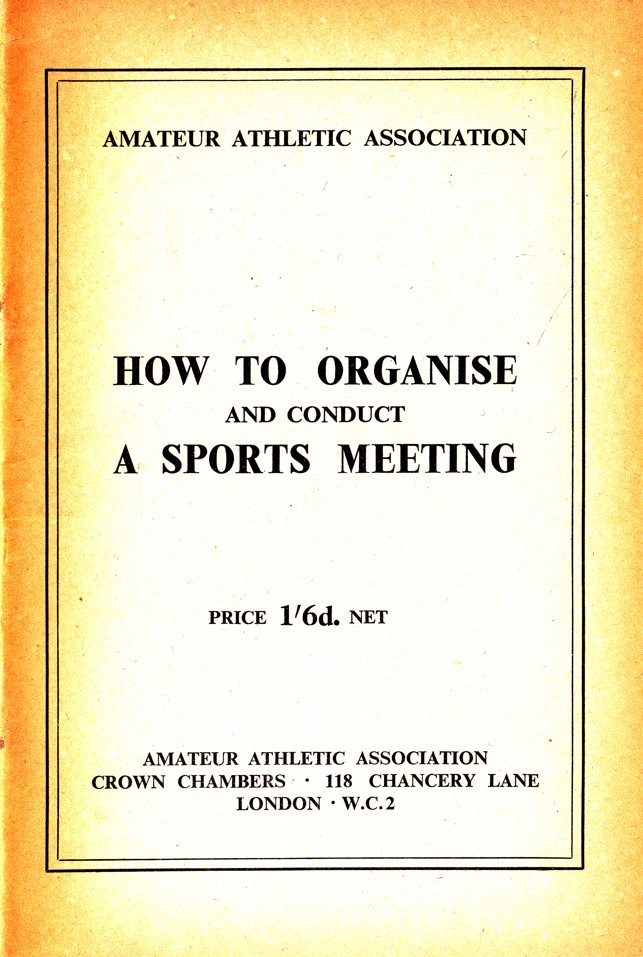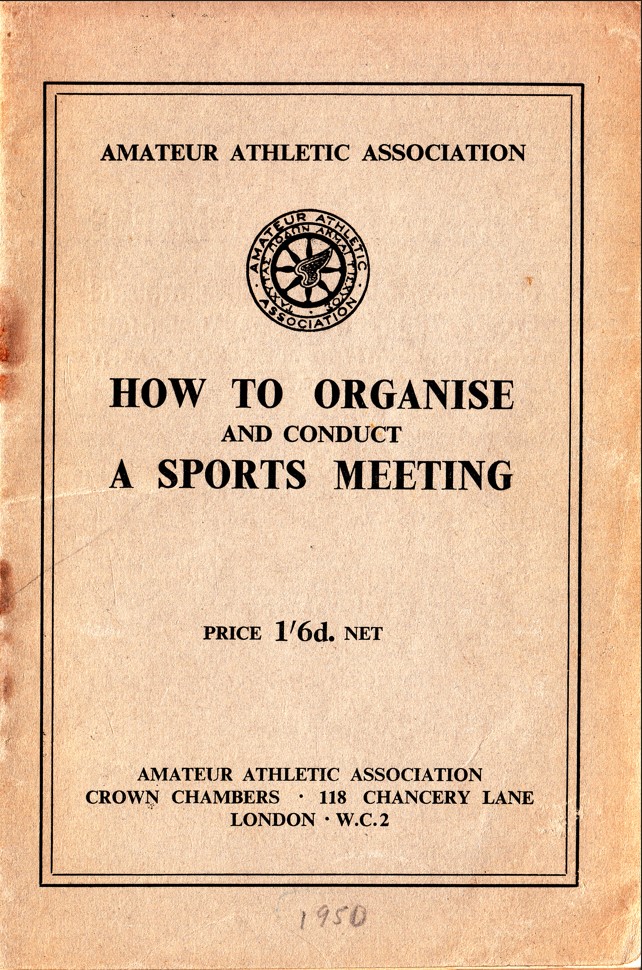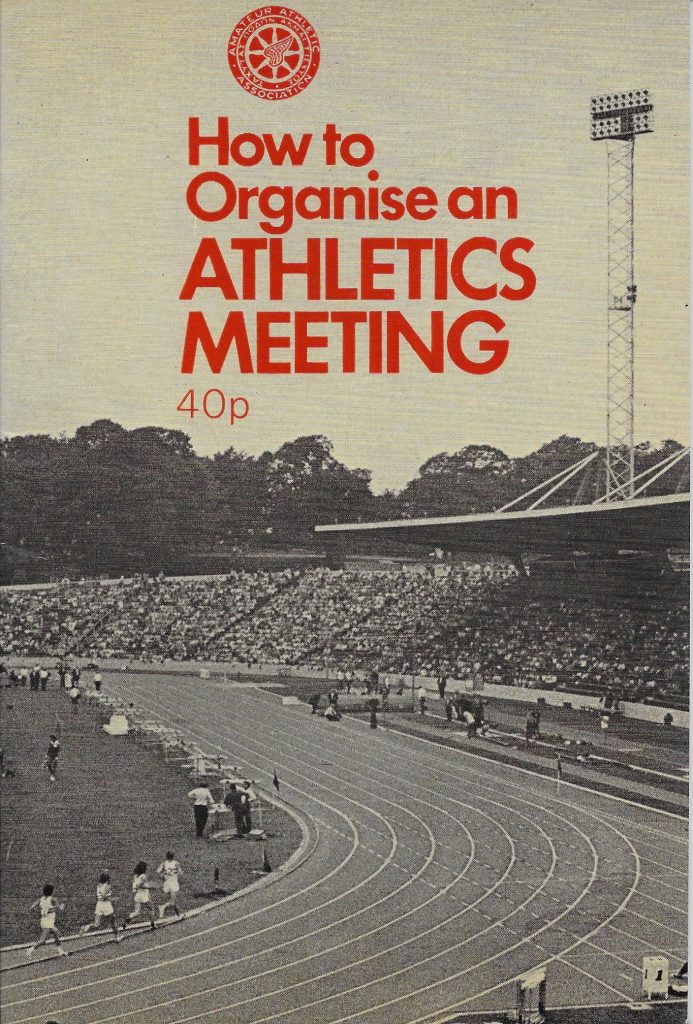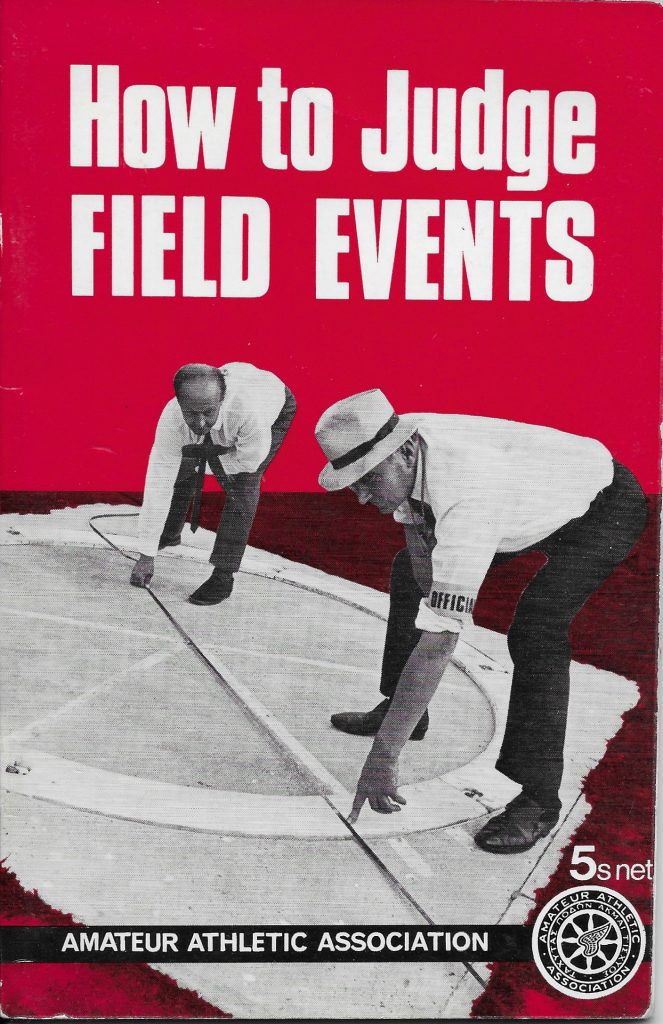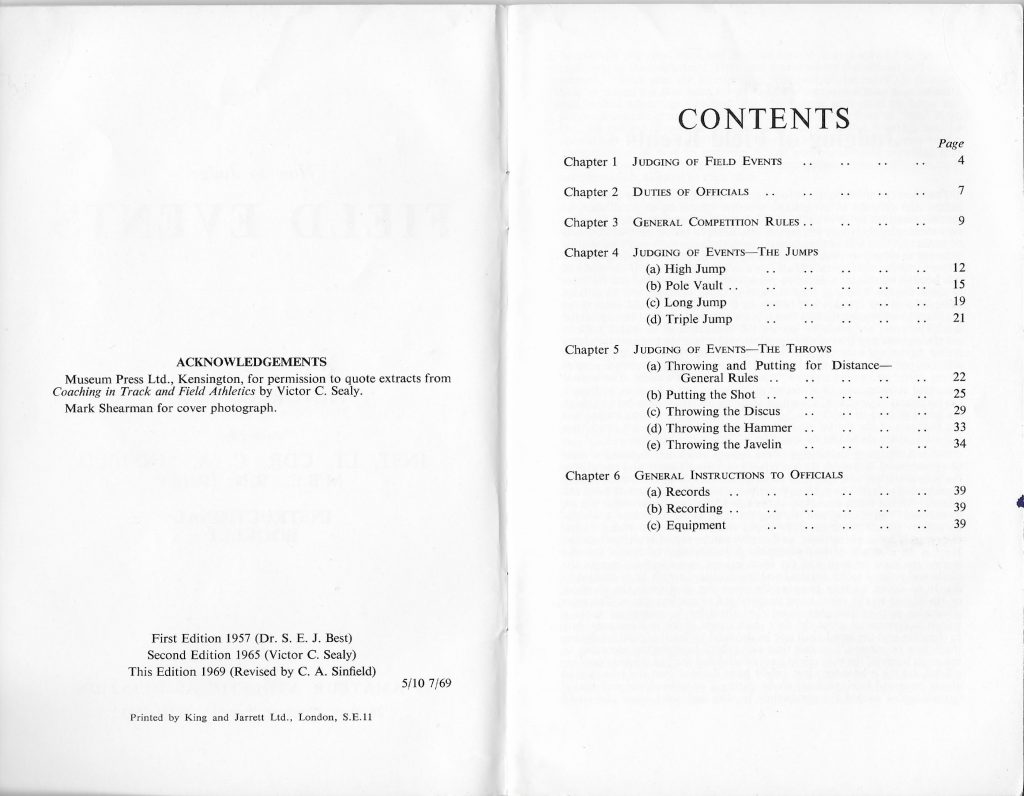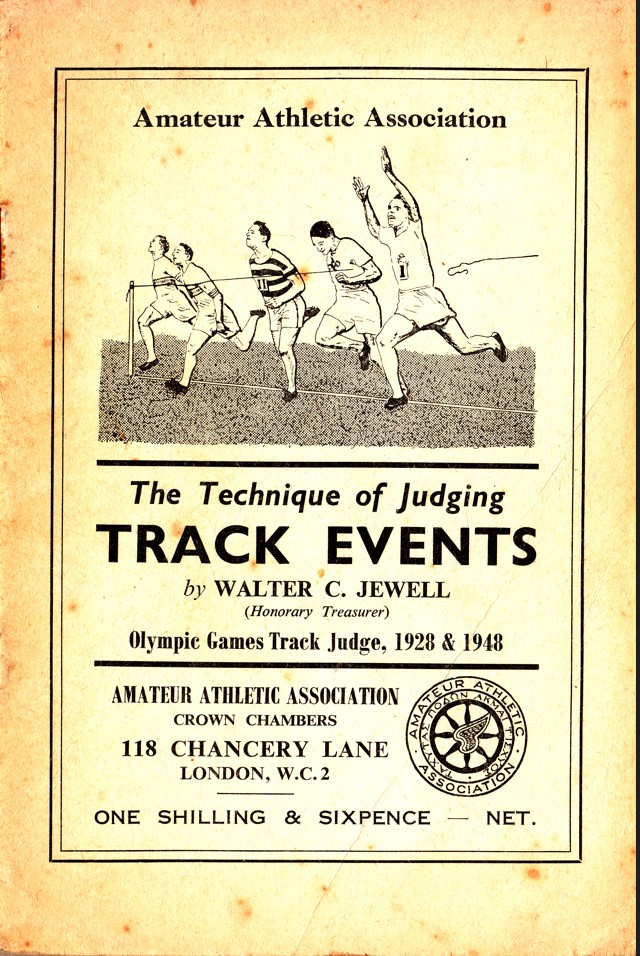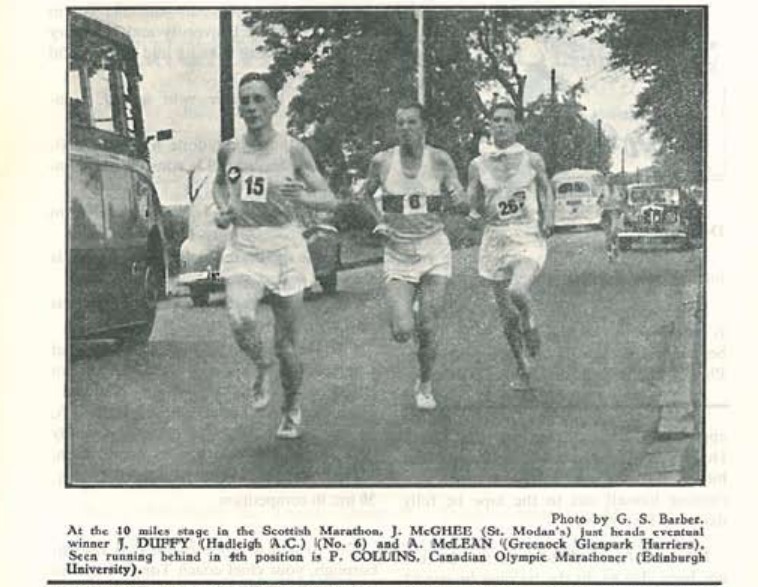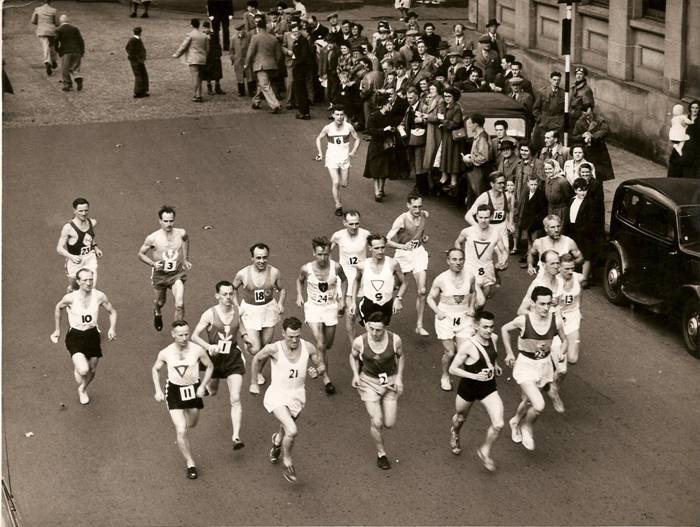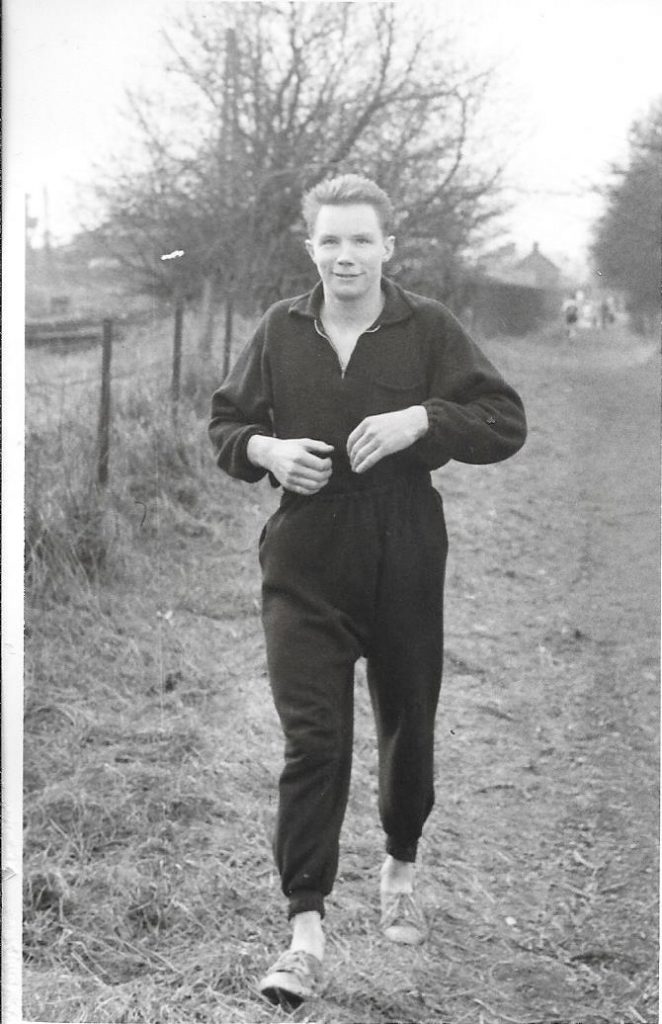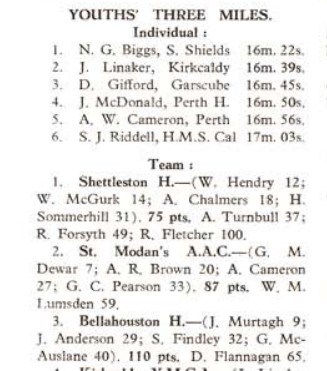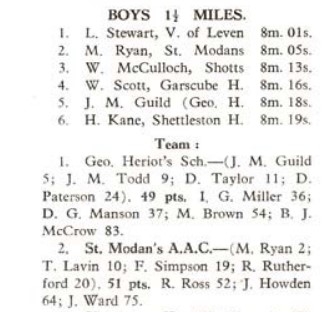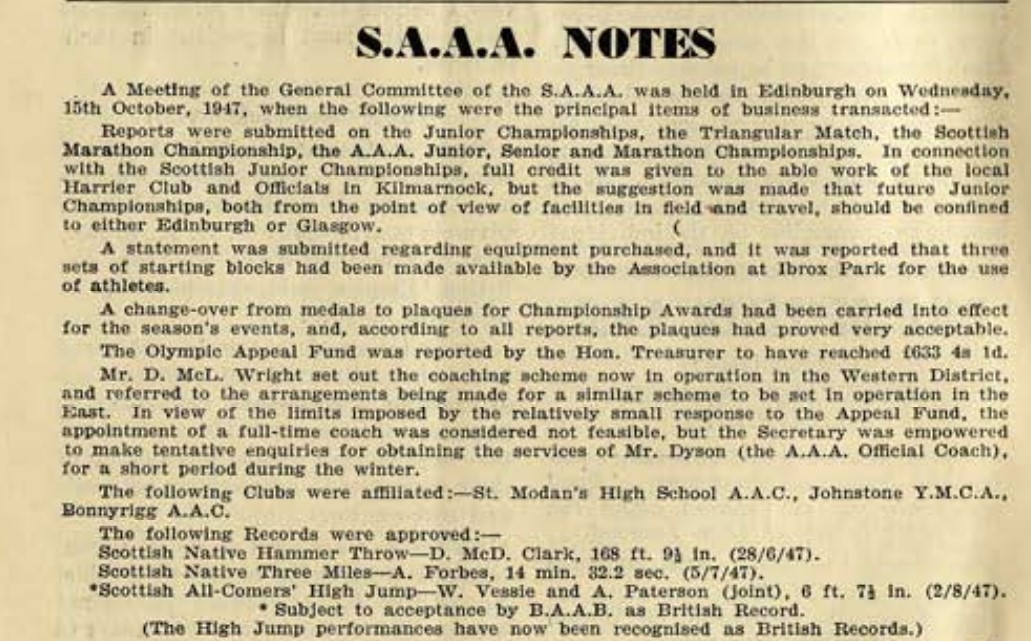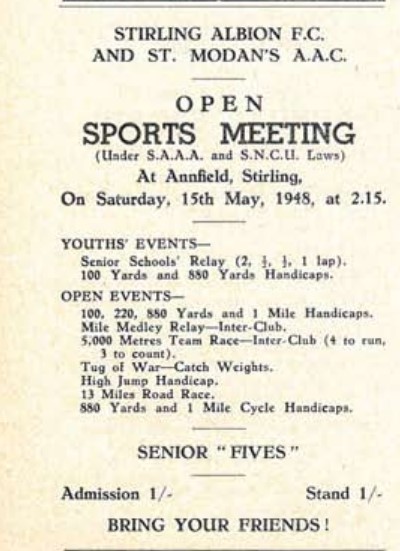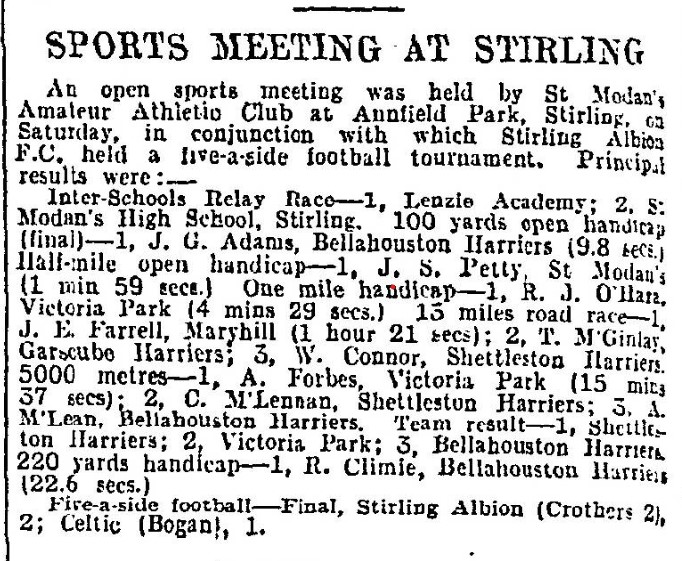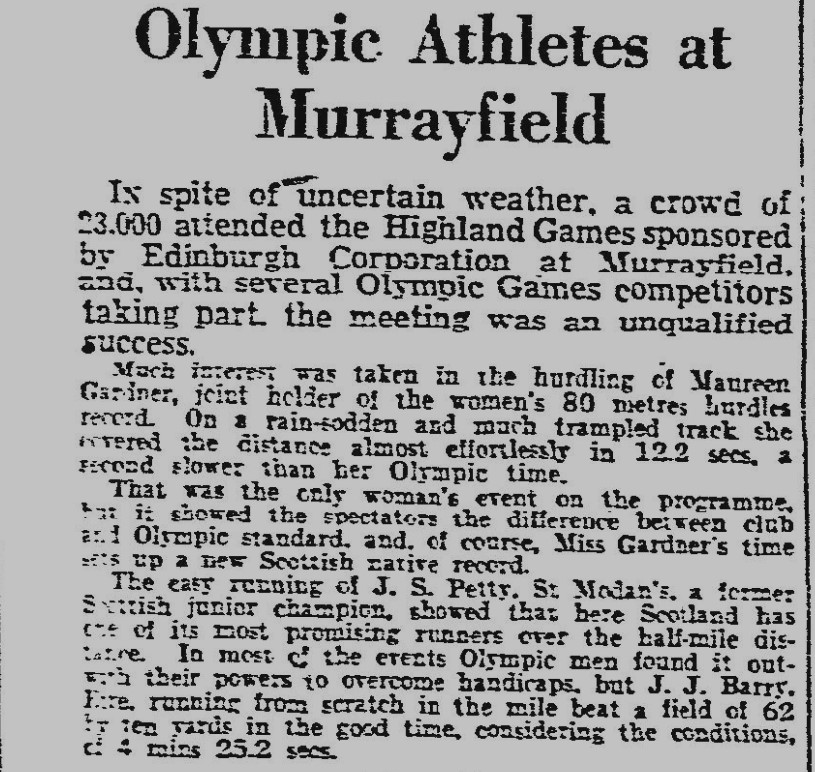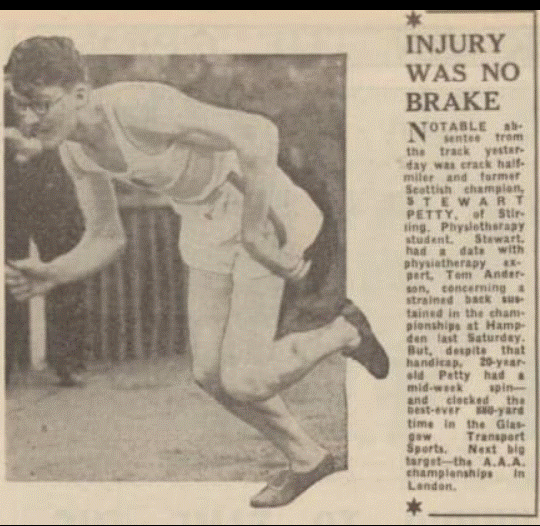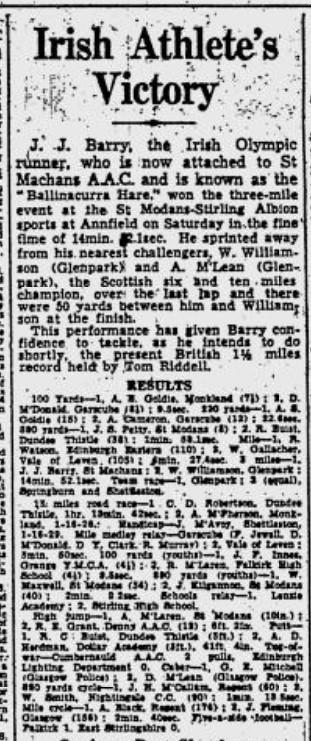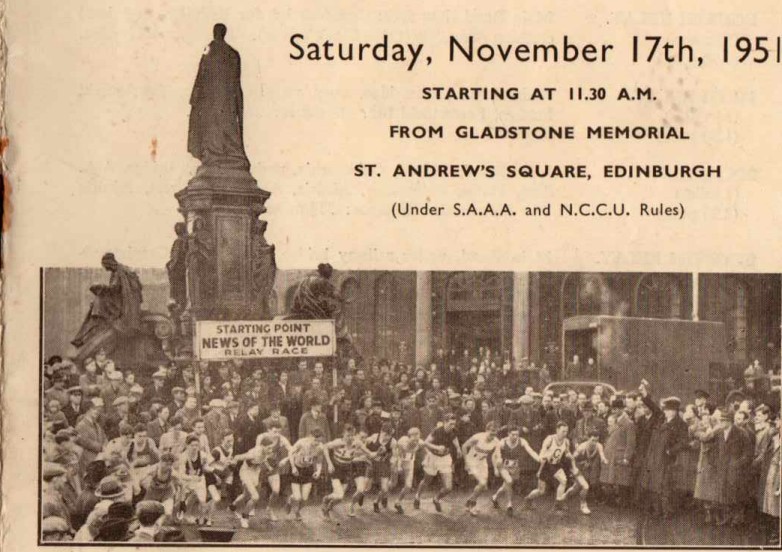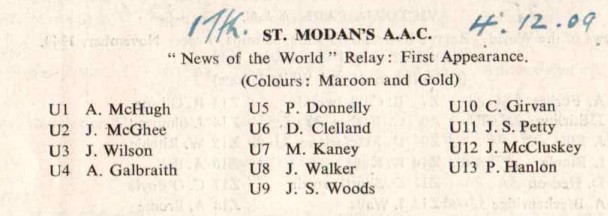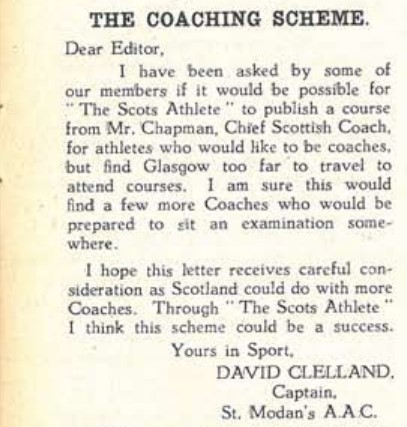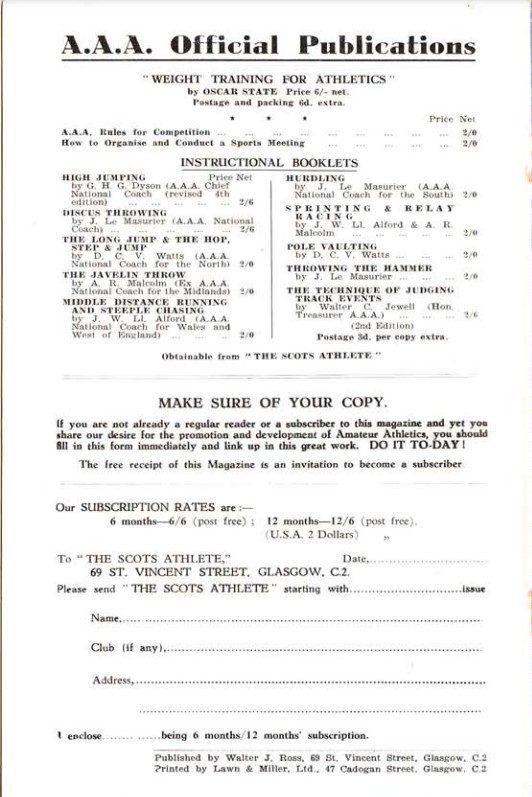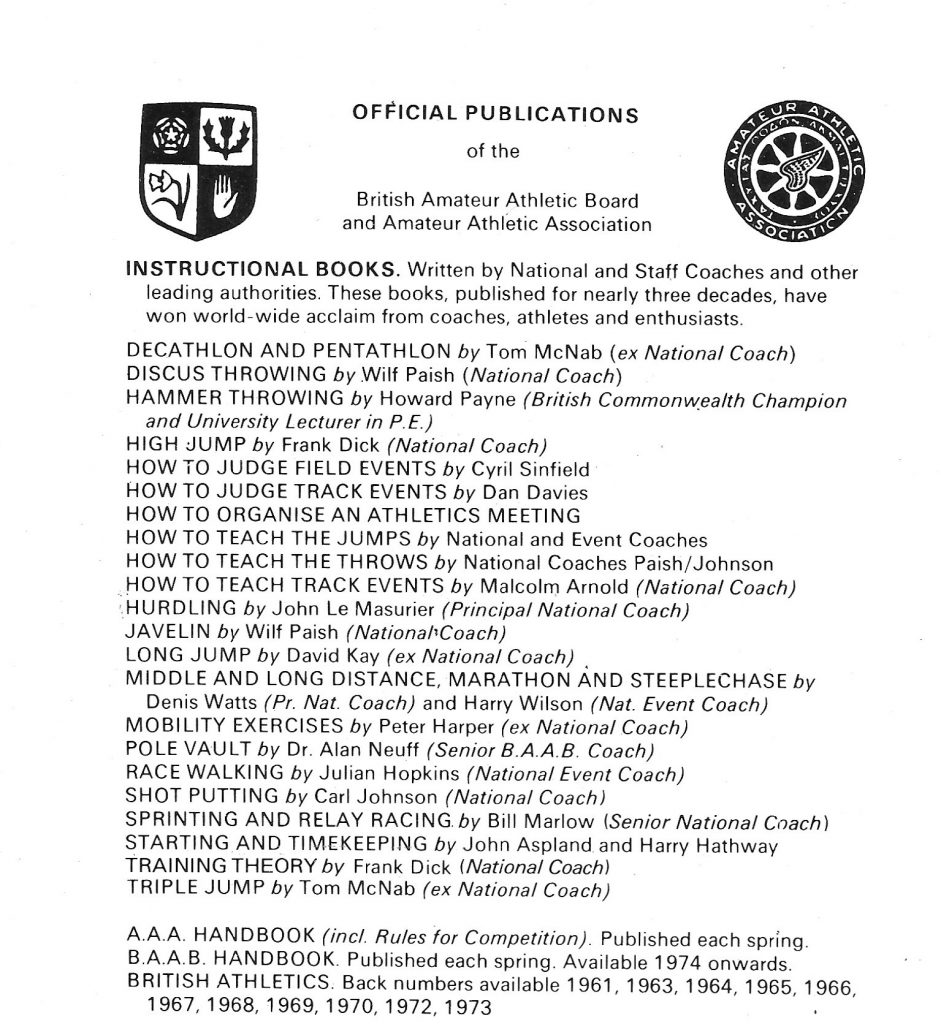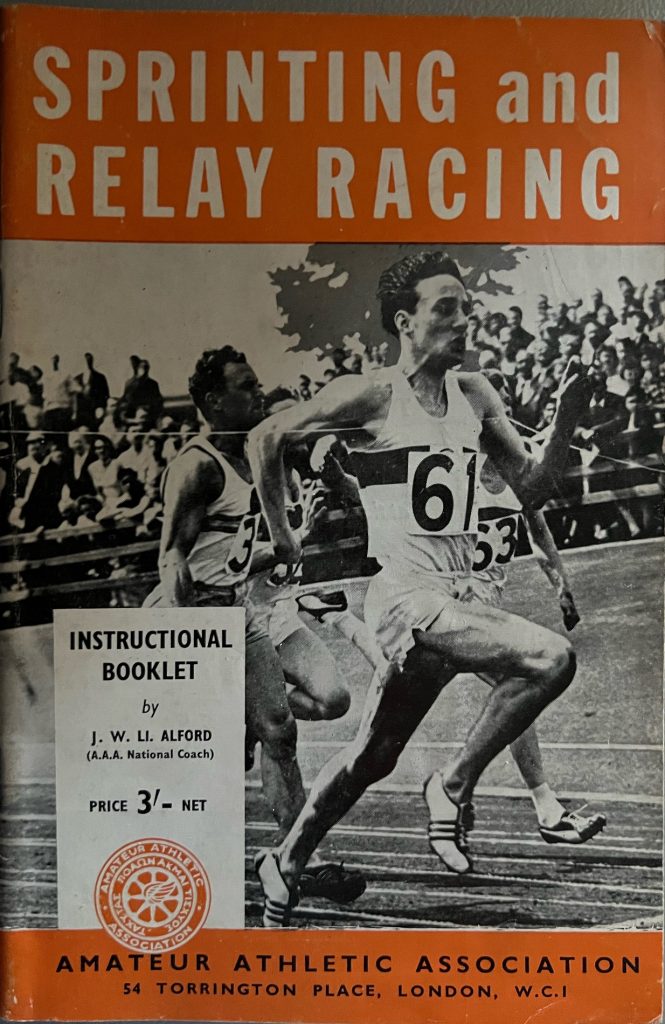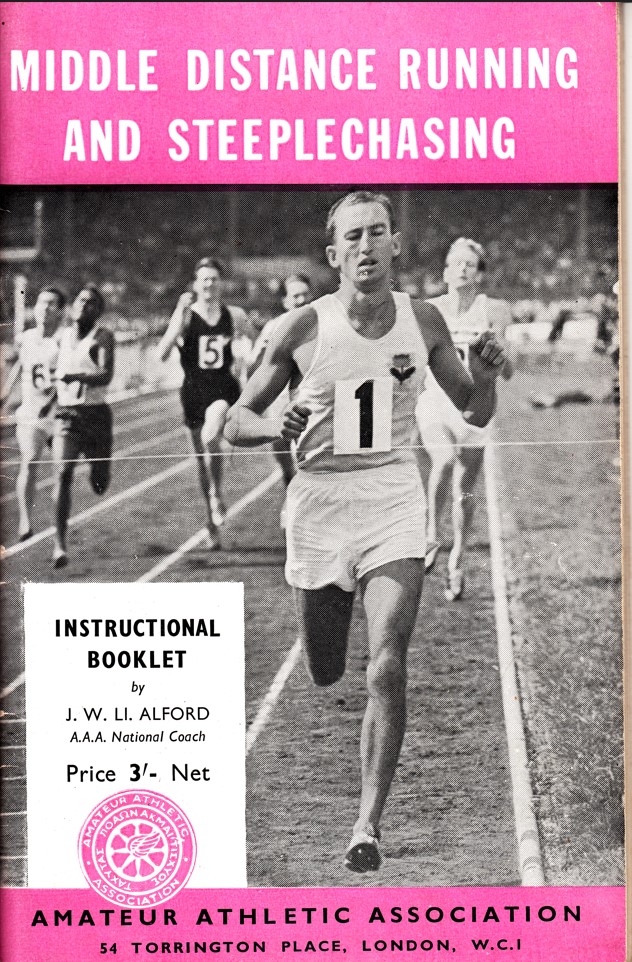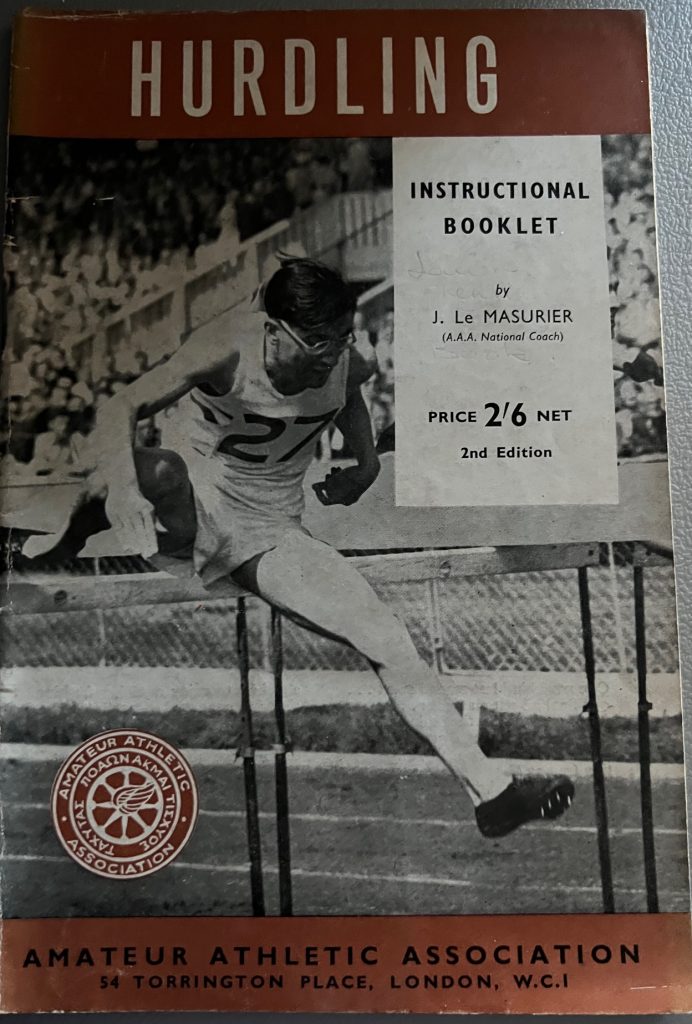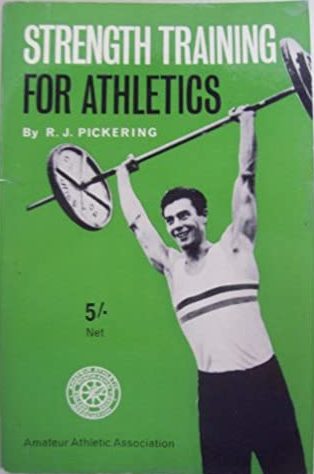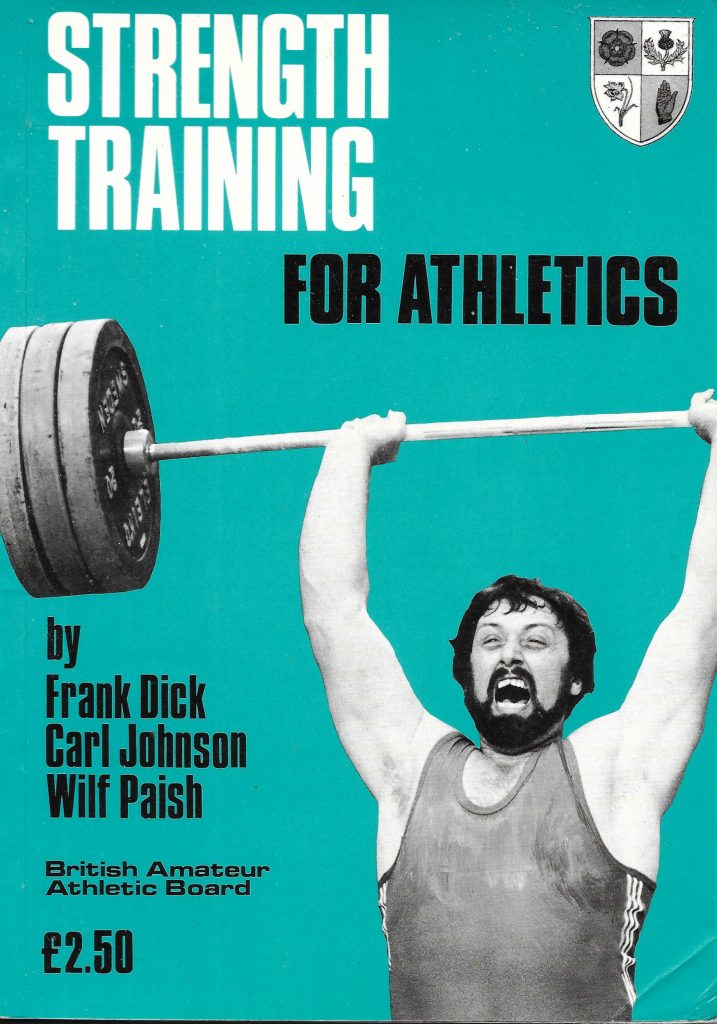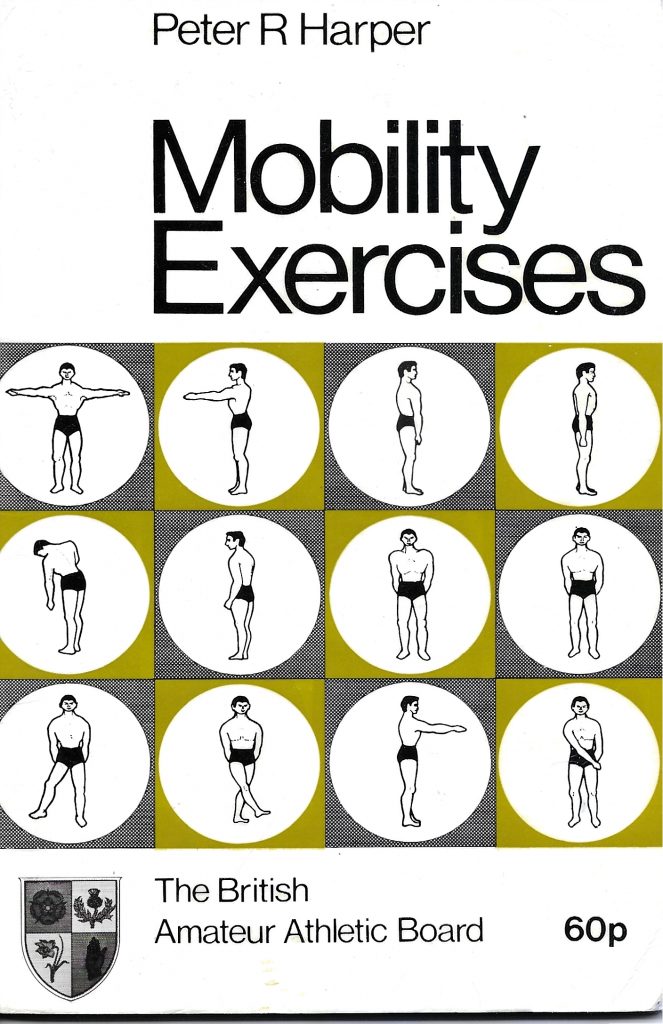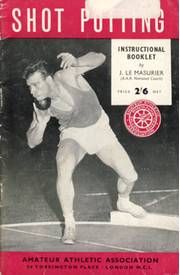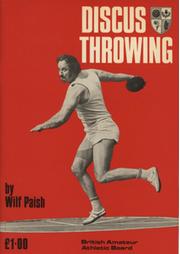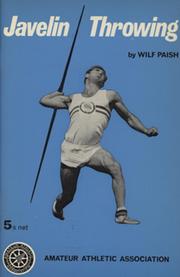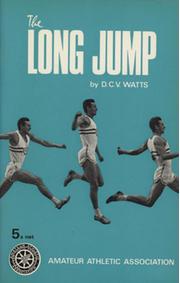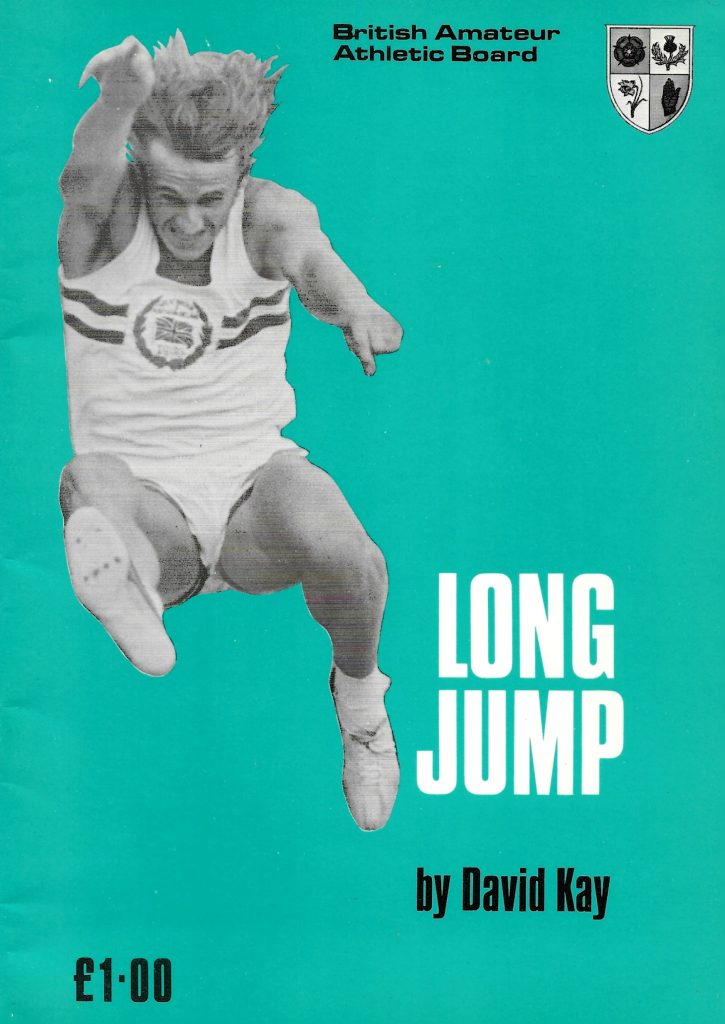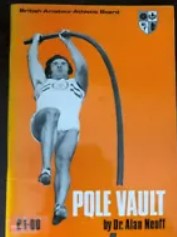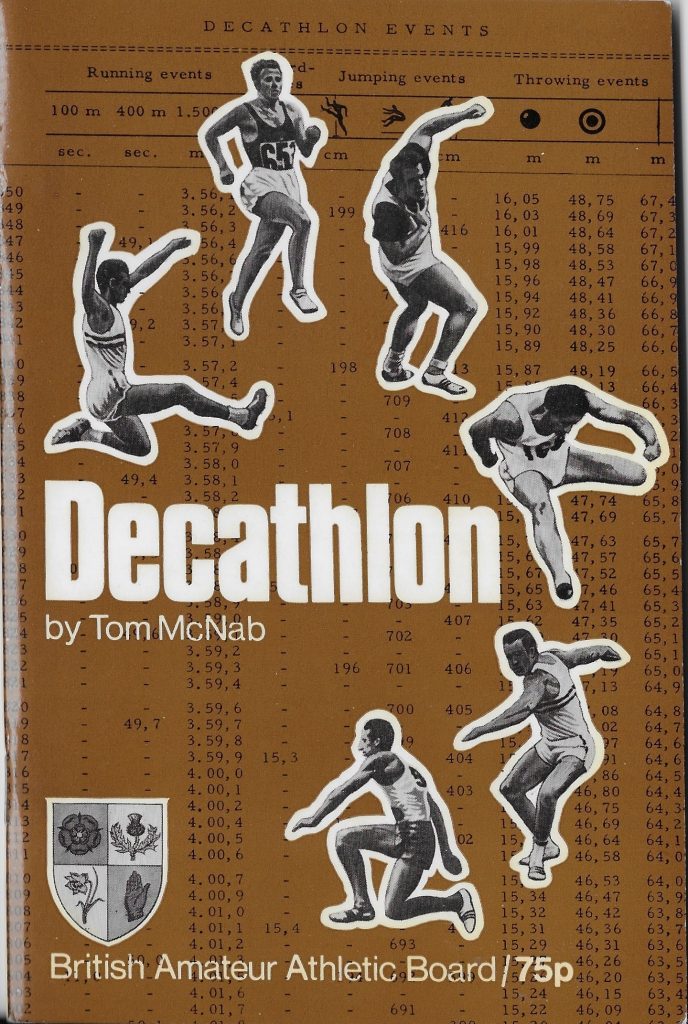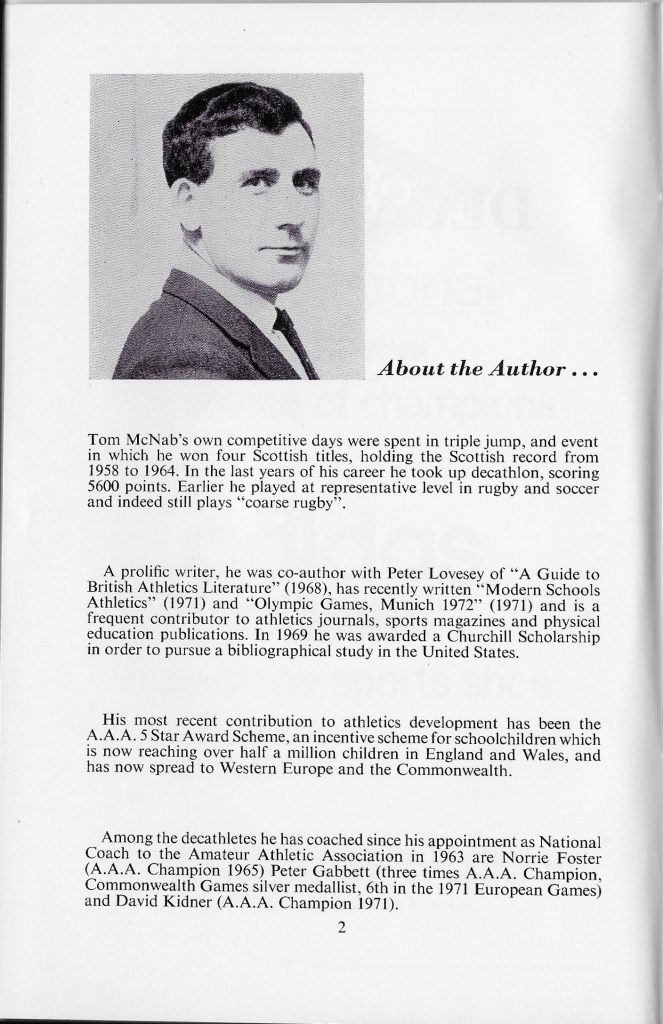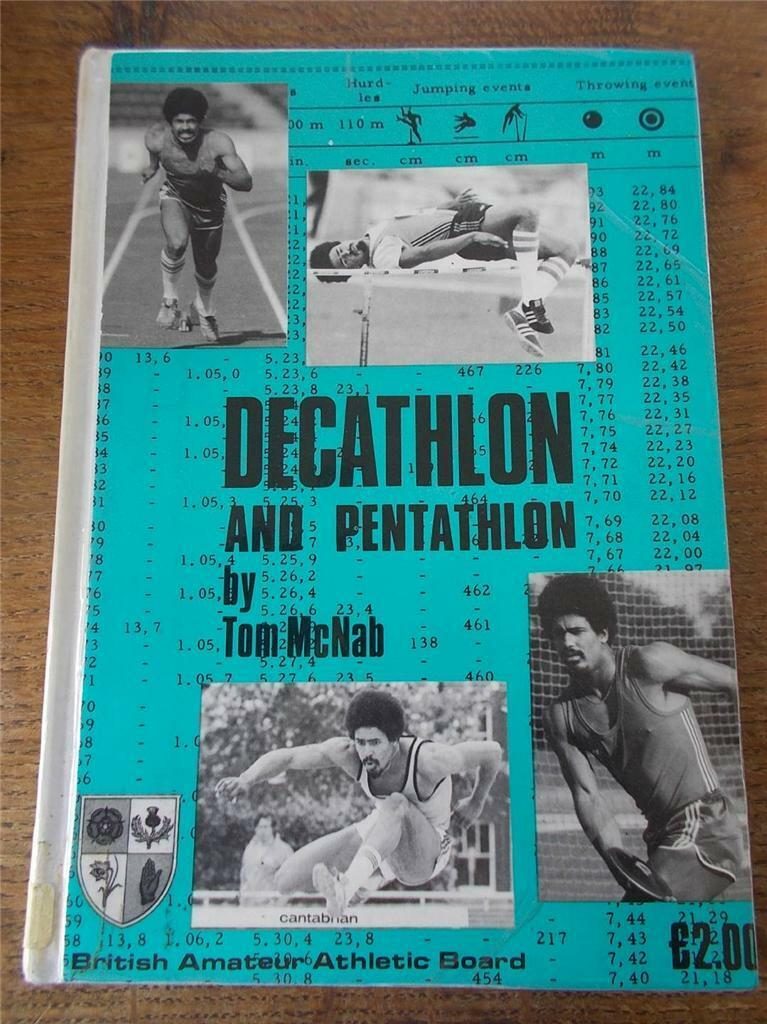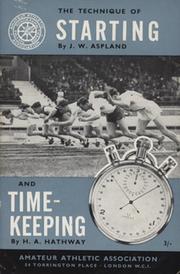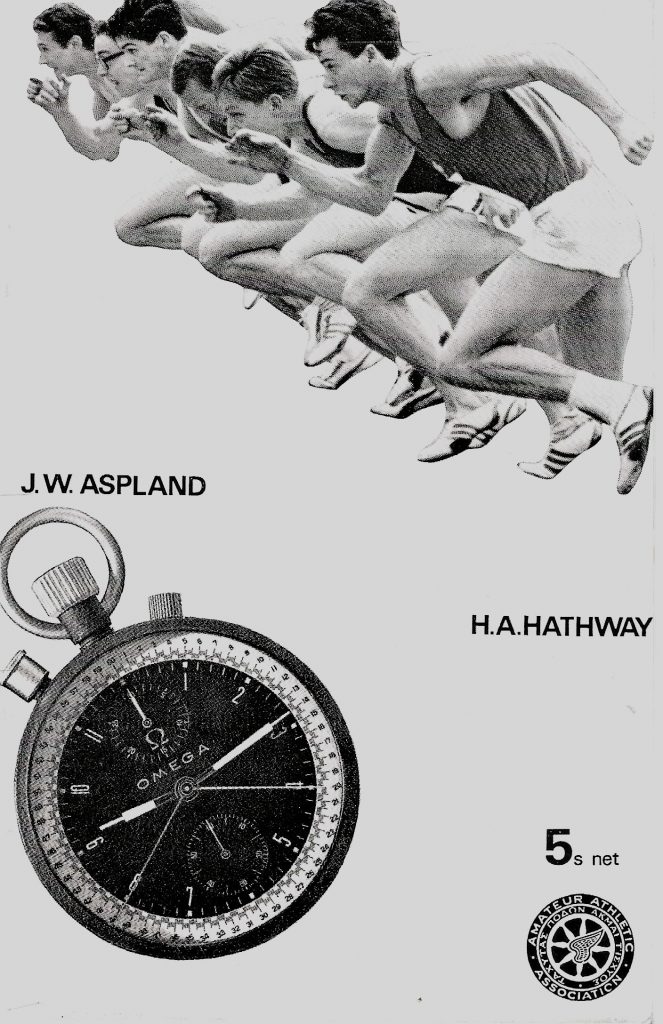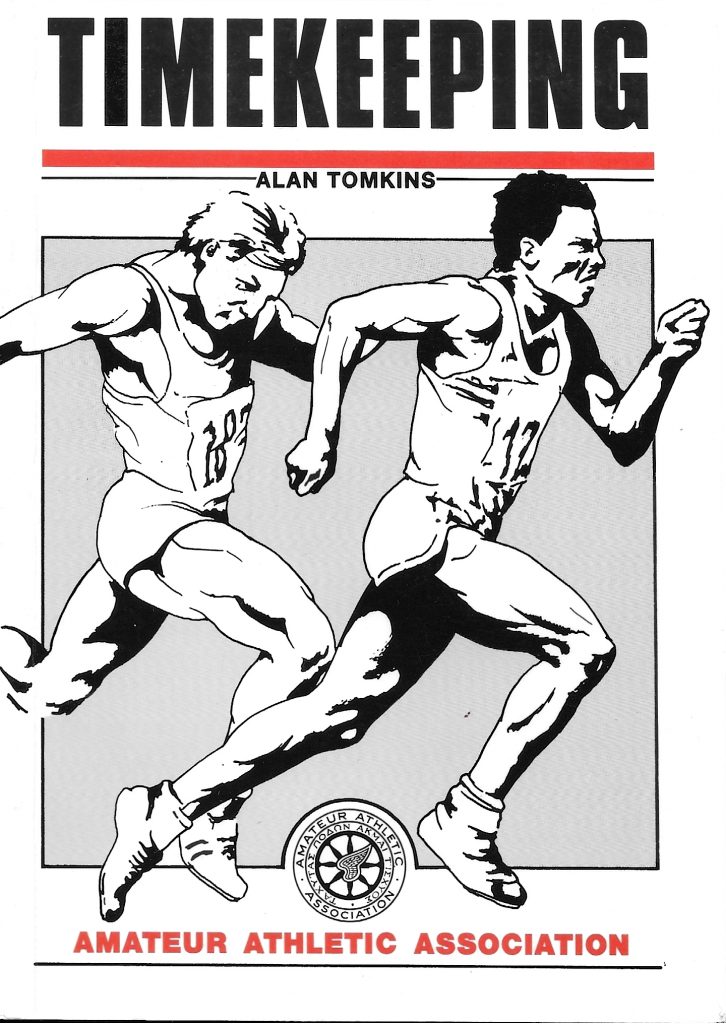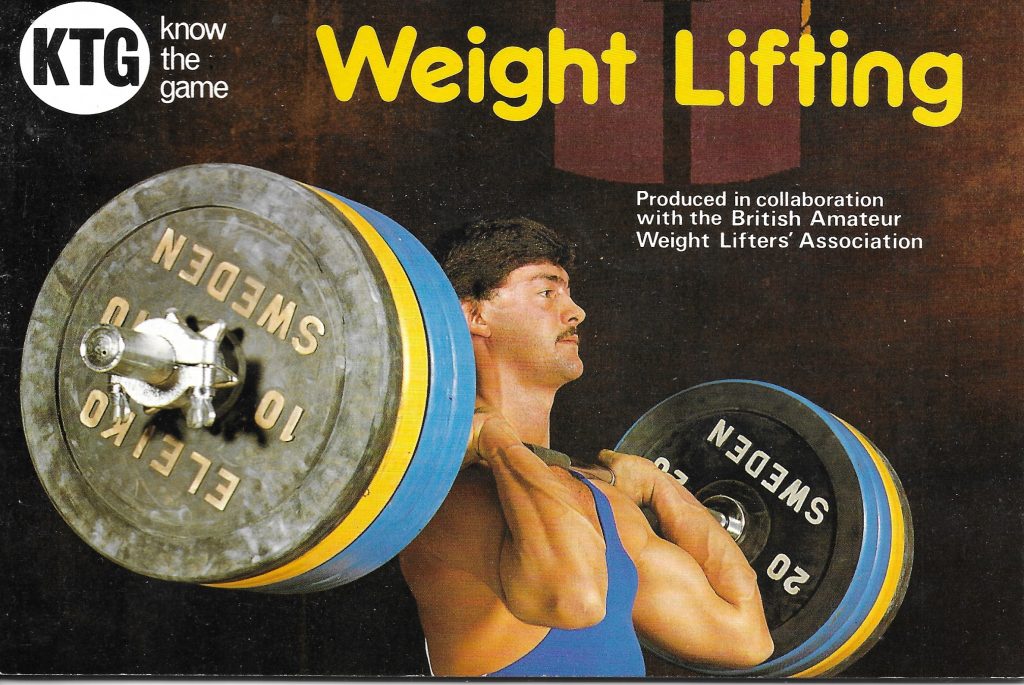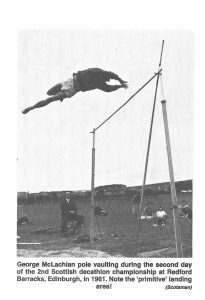
Photo from Keddie’s Centenary History of the SAAA
For all that St Modan’s AC was a very well known cross-country and road running club, it covered track and field athletics too with teams competing in the Scottish track league and individuals turning out in open sports meetings and highland gatherings. The most successful and well-known was George McLachlan, a Scottish and British internationalist, who started as a sprinter and hurdler before taking to the Decathlon where he won titles and set records. He was the first Scot to run under 15 seconds for the 120 yards hurdles without wind assistance. He did this at Edinburgh Highland Games on 18th August 1962 on a grass track in a time of 14.6 seconds when finishing second to Nigerian Alfred Belleh. He himself had a time of 15.2 waiting for ratification but this time took 0.7 seconds from the existing record and ranked him number five in GB for the event. He had been competing well for several years before that and had won the SAAA.s high hurdles in 1961 (15.4), it was at this point that he turned to the Decathlon.
His career was summaries as follows by John W Keddie in the excellent centenary of the SAAA, “Scottish Athletics” –
“In George A McLachlan (St Modan’s AC) Scotland had another decathlete who was to develop his potential in the ensuing years (ie: after 1960). In 1961 McLachlan won the Scottish title with a record 5666 points , and just over a month later, at Loughborough on 10th/11th August, was runner-up in the AAA event with 5777. His great adversary in Scotland, the enthusiastic and hard-working John Alexander Jones of Trinity Academicals AC was 3rd in these Championships after being runner-up in the Scottish event. As the winner was a Rhodesian, D Burger (6343) it could be said with justification that McLachlan and Jones were the top Britons that year. They maintained good form the following year, though McLachlan had to play second fiddle to Australian Z Sumich (Sale Harriers) both in the SAAA and in the AAA Championships. In the former, held at Westerlands on 8th/9th June, the scores were fairly modest – 5744 for Sumich to McLachlan’s 5456 – but the AAA decathlon saw a closer and higher scoring confrontation. It was McLachlan’s finest performance though his UK record score of 6184 (6579 based on 1962 tables) was finally 53 points adrift of Sumich’s total. McLachlan did not compete after 1962.”
We asked Graham McDonald (Pitreavie AAC) who met George at meetings and he said that
“George came through to Pitreavie quite often with St Modan’s AAC for the Inter Club meetings we held in the early days of the Club – the later 50’s and early 60’s. I used to do the High Jump for Pitreavie in those days and would find myself up against George when St Modan’s came through. It was no contest , of course – but if John Jones ( another multi eventer) came over from Edinburgh with the Trinity Ac FPs , there would be quite a contest between the pair of them..
I can’t say I knew him as I only met him at these Inter Clubs , HG’s and open events but he was a friendly guy.”
The ranking performances below are taken from the www.scotstats.net website and George’s competitive record is at the foot of the table. The same website tells us that he competed twice for Scotland – on20th August 1960 against Wales where he won the 120y hurdles, and in the same event against Holland on 18th August 1962 where he was second behind Alfred Belleh, a Nigerian living and studying in Scotland at the time, with Scotland filling the first two places. Both were home fixtures.

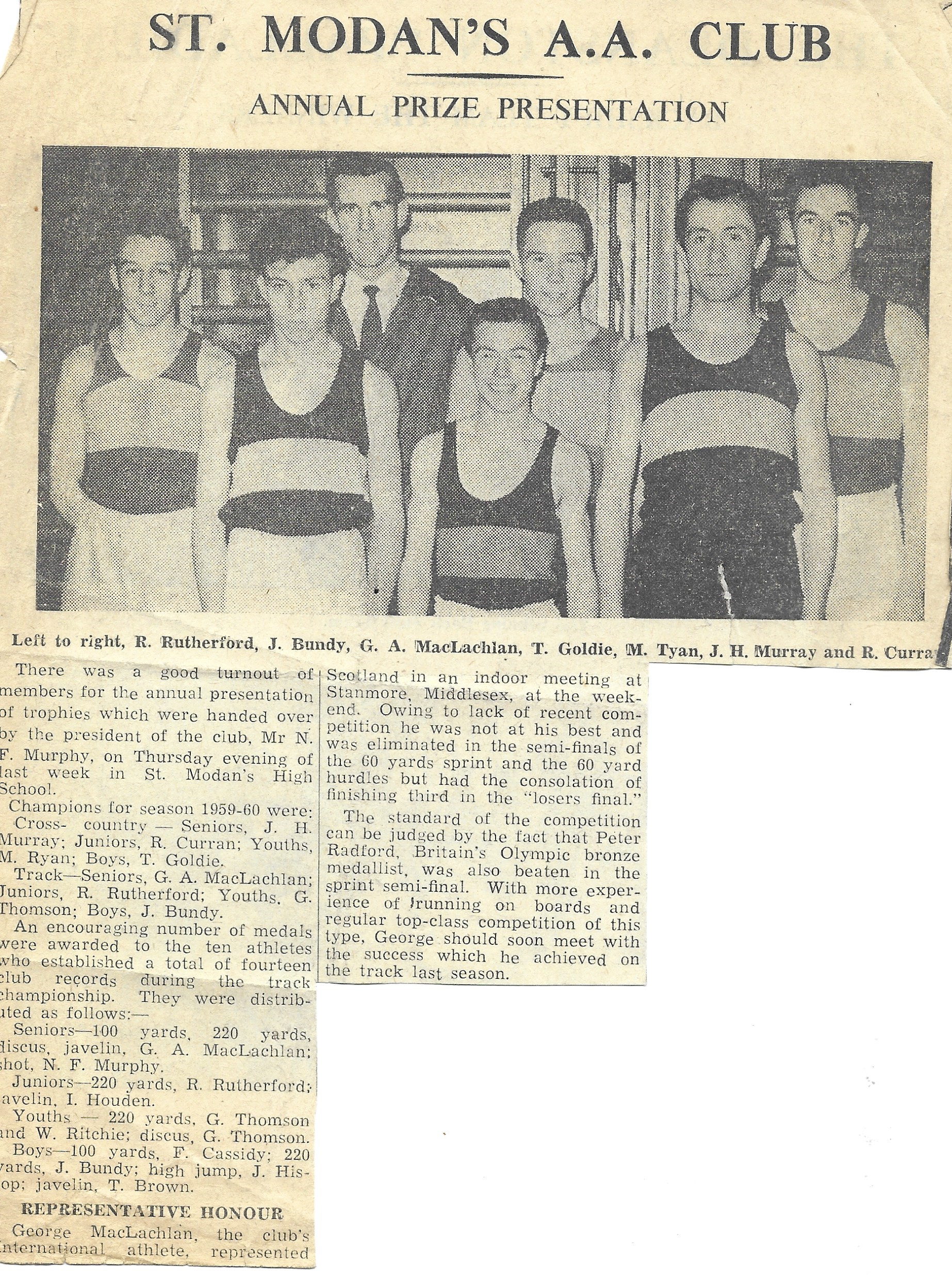
St Modan’s AC club champions, end of season 1959/60
The Cross-country teams in the younger age groups were going from strength to strength in season 1959/60. In the District Championships held at Renton, Dumbarton on 23rd January, 1960, the youths team had the first two finishers in the formidable double act of Willie Fleming and Mike Ryan. With three to count in the team race they were unfortunate to be beaten by the better packing of the Monkland Harriers squad. Result below.
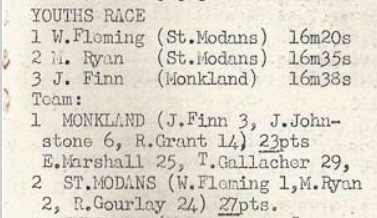
The same duo led the Youths team into second place in the national at Hamilton on 5th March where teams had have four runners finish to complete the team. It was the same three runners who led the field in as it had been in the Districts, but the order had changed. Finn won this time round and although Fleming was placed second and Ryan third, they were both given the same time. The scoring runners were Fleming 2nd, Ryan 3rd, Rutherford 25th and R Gourlay 54th. R Howden was the back up runner in 61st place. In summer at the West District Championships at Westerlands on 28th May, J Cameron was second in the Junior 880 yards behind Hugh Barrow (VPAAC) who won in 1:59.4 seconds. A week later, 4th June, in the Lanarkshire Constabulary Sports at Shawfield, Mike Ryan won the Handicap Mile in 4:11.1 running from 90 metres. Another week later and Ryan was third in the handicap mile at the Glasgow Police Sports at Ibrox Park behind Renton of Teviotdale and Bert McKay of Motherwell. At that same meeting team mate Willie Fleming ran in the 3000m steeplechase where he too finished third, behind R Henderson (Braidburn) and J McLatchie (Muirkirk). At the SAAA championships at the end of June, Ryan won the junior mile in 4:20.8, defeating Jim McLatchie of Ayr Seaforth and Jim Finn was in third. After the championship meeting George McLachlan was selected for the AAA’s Championships at Welwyn Garden City on July 8th and 9th. In that championship, McLachlan was third with 5583 points behind C Andrews of the Army who set a new GB record of 6176 points and J McKinney of the Irish club Albert Foundry who scored 5732.
Having run at Shawfield Stadium and Ibrox Park, it was local Brockville Park in Falkirk that welcomed the athletes for the Falkirk FC & Falkirk Victoria Harriers meeting on 30th July and Mike Ryan (50 yards) won the handicap mile from Willie Fleming (100 ) in 4:16.8. At the Strathallan Games on 6th August McLachlan won the 100 yards on a grass track off half a yard in 9.8 seconds.
It was now into the new 1960/61 season and in the Midland Relays on 5th November at Stepps, the St Modan’s AC team caused a stir when they finished third ahead of Victoria Park, Bellahouston Harriers and Springburn Harriers. The team was made up of Charlie Meldrum (14:34), M Ryan (14:28), JH Murray (14:54) and W Fleming (14:37). There was also a second team that finished 21st of the 38 teams that started the race. Their team was R Rutherford (16:13), A Muir (16:26), D Clelland (15:43), AT Roy (16:12). The packing in the first team was excellent with Ryan only 7 seconds behind the sixth time of the afternoon. The Midland Championships were held at Renton on 21st January 1961. In the Senior/Junior race, the team was fifth with Meldrum 6th, Ryan 13th, Murray 26th, Fleming 49th, Clelland 65th and Roy 80th. There were three more runners who completed the course – Muir 91st, Kielt 100th and Howden 108th. The return of Clelland was interesting and he would prove to b very useful to the club again. In the Youths race, there was a new find for the club when J McHattie finished second, 5 seconds down on Jim Finn and 7 seconds up on Lachie Stewart; he was accompanied by Christie in 45th. Goldie (12th), Brown (17th) and Lochrie (16th) saw the team finish in third place with other runners being Stewart (26th), Lennon (42nd) and Duffy (44th). It had been another good day for the club.
It was a weakened squad of senior men that faced the starter for the national championships at Hamilton on 4th March 1961. The Senior team was led home by JH Murray in 46th, new man from Vale of Leven AAC Jimmy Garvey in 47th, A Galbraith in 137th and new senior AT Roy in 155th. The Junior team of Ryan in second behind McLatchie and one place ahead of Jim Alder from Morpeth, Rutherford in 58th, Curran 66th and Howden 95th finished ninth of the 20 teams entered. There were three runners in the Youths race – J Cameron 27th, D Christie 86th and A Drummond 87th. The boys team was eighth of the 17 who ran: Goldie 31st, Brown 33rd, Lochrie 43rd and Tasker 73rd. It was a much better turnout than during the dark days of the mid 50’s but there were many expected names missing – No Meldrum, no Clelland, no Fleming, No McHattie.
*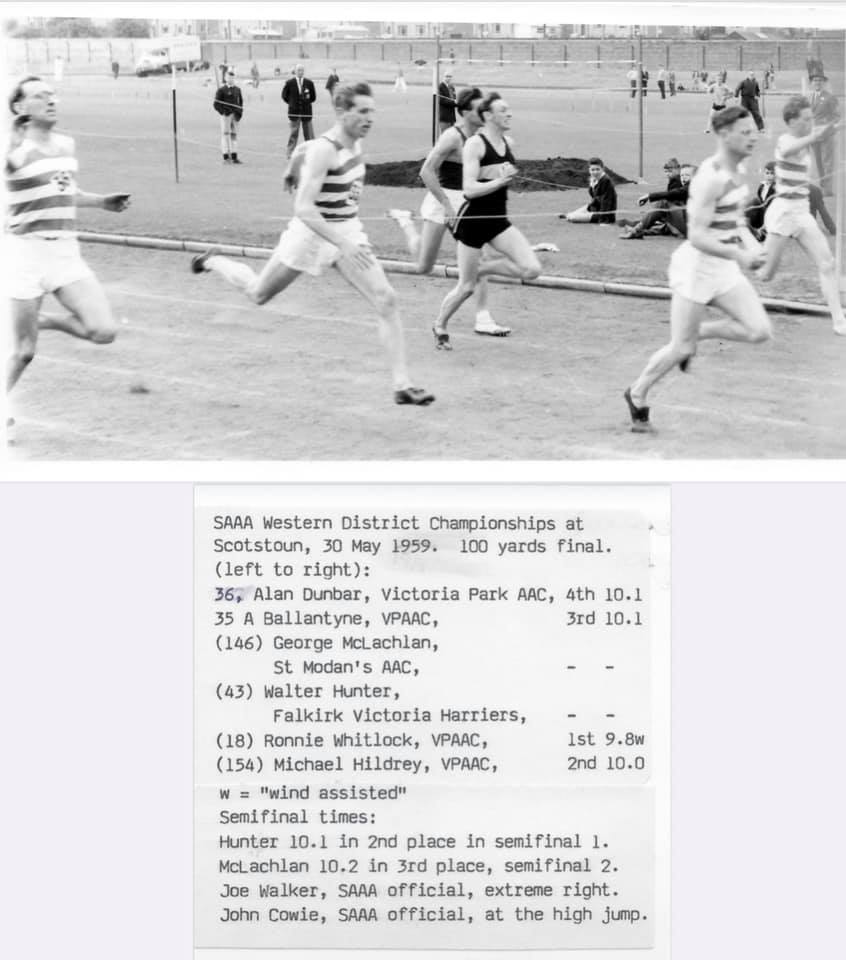
Picture and details from Graham McDonald
We have had a look at the career of George McLachlan above and it is appropriate to have a look at another club stalwart, and more than that, Charlie Meldrum. He had been running for the club as a Youth (U17) and after a spell at Jordanhill where he ran for the college on the track and the club in winter. After his time at College he became a PE teacher at Riverside Secondary School in Stirling. He returned to the club and the standard and numbers competing rose notably. He served on the club committee reaching the position of President. Athletically, he was often in the first 10 finishers in good quality cross-country races and there were other open races (eg 6th in the SAAA steeplechase, he won the 8 lap steeplechase at Ibrox in the Rangers Sports,, and the New Year’s Dar Race at Beith where he was second in the scratch race). He also became an official starter and officiated at many good races on track and over the country. Involved in official training he helped many new starters including the well known and highly respected Barry Craighead. Barry says that apart from the legendary Fred Evans, Charlie “was my mentor and inspiration.” Dick Littlejohn was the starter’s marksman for both of them. Unfortunately Charlie died in a car crash far too soon on his way to officiate in an international match. A very good clubman, a runner, an official, and highly respected. If he was not working at a meeting he would be out cheering on and encouraging the rest of the team. All clubs need members like that.
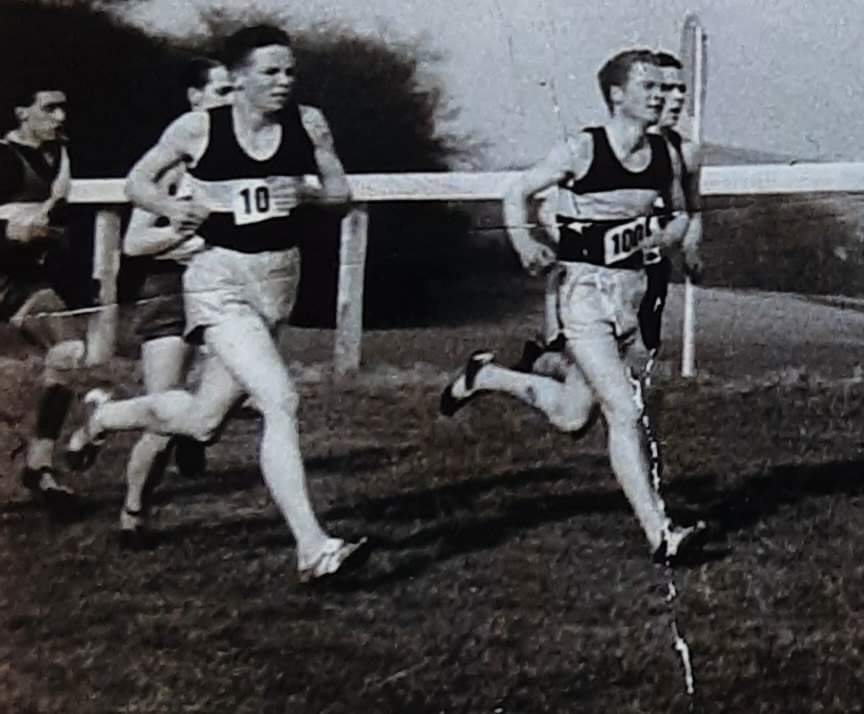
In summer 1961, the West District Championships were held at Westerlands on 27th May, and it was a good day for the club. To start with George McLachlan was third in the 100 yards, and second in the 220 yards, Mike Ryan was third in the Mile, Charlie Meldrum won the steeplechase from Tom O’Reilly, WA Christie was third in the javelin, and J Cameron was second in the Youths Mile. A gold, two silver and three bronze medals on the same Saturday. The Glasgow Police Sports were held on 10th June at Ibrox and Charlie Meldrum was second in the 3000m steeplechase behind T Thomson of Paisley to whom he was conceding 35 yards in the handicap. In the Junior 880 yards, JR Cameron was second. Meanwhile on the same day Jimmy Garvie was third in the Scottish Marathon Club’s 12 mile road race at Springburn in Glasgow.
The SAAA Championships were held at New Meadowbank on 24th June. Mike Ryan continued his successful career when he was third in the Mile behind Graham Everett and Kenny Ballantyne – two really top class milers. WA Christie was third in the javelin, G McLachlan won the 120 yards hurdles, in the Junior Hammer JR Cameron was second and in the Youths Shot Putt competition, H Cameron won with 44′ 5 1/2″ It had been probably the best AAA’s championships for St Modan’s AAC ever. Two firsts, one second and two third place medals was a more than respectable haul.
George McLachlan won the SAAA Decathlon on 1st July at Redford Barracks, Edinburgh from JA Jones and RL Hay. His best performances were noted by the Glasgow Herald as 10.9 for the 100 metres, 15.5 for the 110 metres hurdles and 10′ 8 1/4″ in the pole vault. The first three were selected to compete in the AAA’s event at Loughborough on August 11/12th; McLachlan and Christie were picked to compete for the SAAA against Atalanta the following Saturday. In that match, McDonald was second to Belleh in the 120 yards hurdles, and he was part of the relay team with the members of Victoria Parl that broke the Pitreavie arena record. Christie missed the javelin but McDonald filled the gap and finished third. On 29th July at the Falkirk Sports at Brockville Park, George McDonald was the star of the show with a victory in the special invitation 100 yards in 10.0 on the grass track. The Strathallan Gathering was always held on the first Saturday in July and Graham McDonald inspected his programme for the 1961 meeting and tells us that there were no fewer than nine men from the club competing that day:
H Cameron Youth’s 100yd handicap off 5yards, J Cameron 880yds Jun handicap off 28 yards, Mike Ryan 1 mile handicap off 35 ( Ken Ballantyne ESH backmarker off 20yds) and Mike also entered the 2 mile handicap off 30yd and back marker where he was accompanied by Charlie Meldrum who was off 125yd and Willie Fleming (140 yards). In the field events, J P H Paton was in the Long Jump and R Vannan in the High Jump handicap events. This can be taken as a fairly typical club representation at local Sports and Games. Finally In the AAA’s decathlon on 11th/12th August McLachlan was second with fellow Scot Jones third.
It had been a splendid season for the club with almost every event from 100 yards to the marathon and several field events being contested at championship standard – or every event if you count George McLachlan on his own. What would the winter bring?
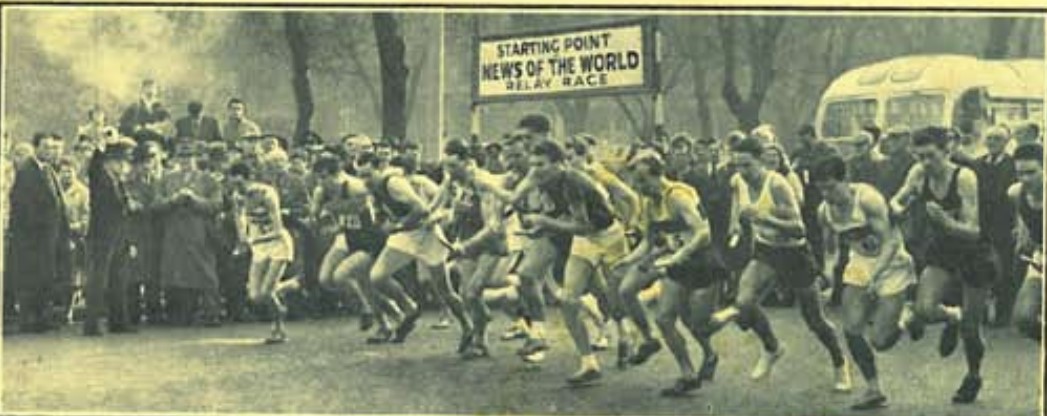
Winter 1961/62 saw the club with two teams in the Midlands District Relay Championship with the A Team finishing sixth and the B Team 23rd. Mike Ryan had the third fastest of the day behind John Linaker and Andy Brown of Motherwell. The runners and their times were:-
A Team: J Garvie 13:51; M Ryan 12:26; D Clelland 14:21; C Meldrum 13:32. B Team: A Roy 14:56; A Cameron 15:42; G Pearson 15:14; I Howden 16:04.
The reason for the two teams was soon in evidence: the club was taking part in the eight man Edinburgh to Glasgow Relay. It was a prestigious event, entry limited to 20 clubs and by invitation only. The race was held on 18th November, 1961, and the names on the programme from whom the team would be chosen were

The chosen runners, in order and place in the race were as follows:
H Taylor 1st stage 16th; M Ryan 2nd stage 15th; R Rutherford 3rd stage 19th; W Fleming 4th stage 19th; AT Roy 5th stage 19th; J Garvie 6th stage 19th; GG Pearson 7th stage 20th; D Clelland 8th stage 18th.
It should be noted that the second and sixth stages are generally regarded as the toughest because they are the longest but, more importantly most of the very best runners in the country tackled them. Nor is the race itself for the faint hearted – there were always lots of supporters in cars, team buses or even on motor bikes following the race roaring their runners on. The course wound through villages, along open roads with fields on either side, across busy roads, there were stewards at all corners and junctions (often enough there was a policeman directing traffic) and it was a daunting experience. Very few runners could turn on their best performance in their first appearance in the race. It is notable that the man who picked up most places was the man who had experience of the event when running for Falkirk Victoria – Dave Clelland. The absence of Charlie Meldrum must have been a blow to the club’s chances too. It was however a good solid performance – not in the last two so not an automatic bar to competing the next year.
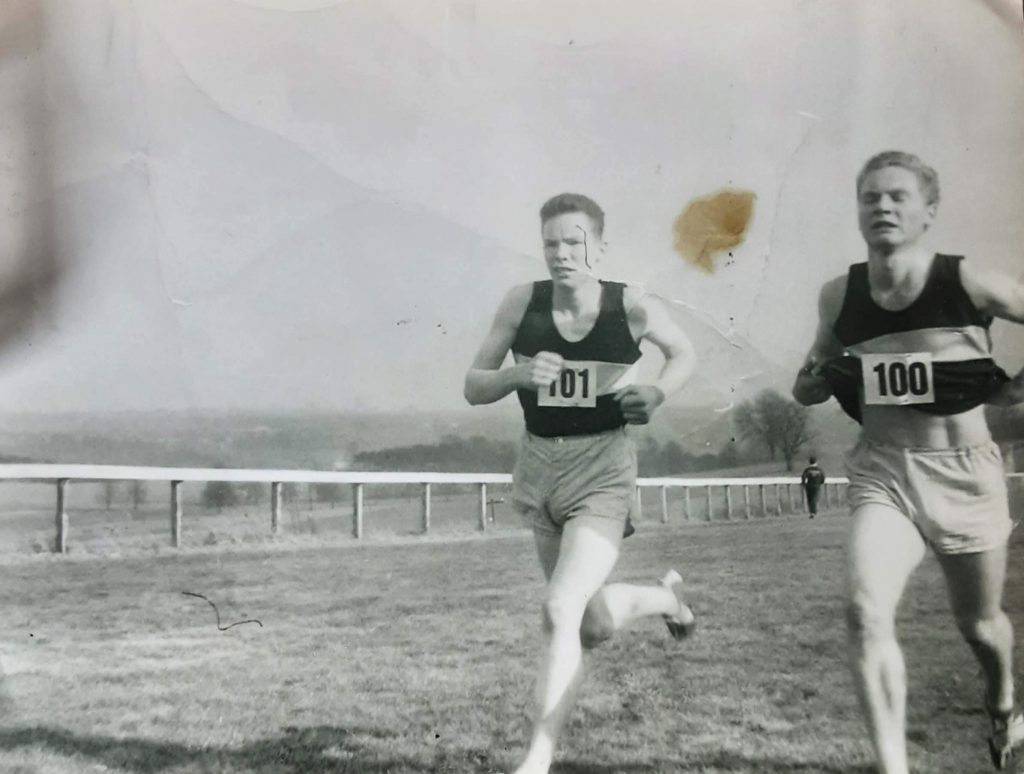
The Midland District Championships in January 1962, were held a Strathleven on 20th January 1962 and in the Senior/Junior race, Mike Ryan was the first St Modan’s runner when he crossed the line in seventh to be first Junior. The other club members to finish were J Garvey 37th and H Taylor 60th. In the Youths race,H Lochrie was 10th, T Goldie 13th and J McHattie 14th to see the team finish 4th. There was alsos a Boys race where the trio of J Fleming 6th, T Brown 7th and W Samson 13th was third team with the club also represented by H Tasker 21st and I McRae 22nd. The National was held at Hamilton Racecourse on 3rd March 1962. The senior men on the day were J Garvie 89th, A Galbraith 126th, G Pearson 148th. In the Junior race, Mike Ryan was the only club man and he was third, In the Youth Race, J McHattie was ninth and, again, the club only had the one runner forward.
In the Boys race, St Modan’s won a first national championship. Newcomer Walter Eadie was third behind D Middleton and R Wedlock followed by Tom Brown sixth, Jim Fleming twelfth annd W Samson twenty eighth.
The summer came around and the club was represented in meetings as usual with championship performances noted here. First, in the West District Championships at Westerlands on 28th May, Mike Ryan ran in the Three Miles and finished second to Calum Laing of Glasgow University and George McLachlan won the 120 yards hurdles. and G Thomson was also second – in the discus. Another promising young middle distance runner made his first championship appearance when he was second in the Junior 880 yards – Tom Brown was behind Dabney of Ayr Seaforth and ahead of Middleton of Springburn.
In the SAAA Championships on 23rd June, McHattie won the Junior mile in 4:23.1 to duplicate Mike Ryan’s victory and be the only St Modan’s athlete to win a medal at the meeting. On 28th July, at Falkirk, McLachlan was third in the invitation 100 yards sprint which was hotly contested – all the top sprinters in the country had come along and three heats were required to get the finalists. McLachlan was only beaten by WM Campbell and RW Whitelock. Mike Ryan was second in the mile behind W Morrison of Larkhall. In August, 10/11th, George McLachlan set Scottish and British records for the decathlon when finishing second to Z Sumach. Sumach was not eligible for the record since he had only come to Britain from Austraalia 18 months previusly. He actually led until the second last event – the javelin – when Sumach went well ahead in points. McLachlan was in front ot Sumach in the 1500m but not far enough to catch him or the title. One week later at Murrayfield in the match against Holland, McLachlan was second to Alfred Belleh in the 129 yards hurdles to ensure maximum points for Scotland who won the match by only one single point.
The winter 1962/63 Relays were held again at King’s Park in Stirling and the St Modan’s team ran well enough to finish sixth of 37 teams with the result as below:
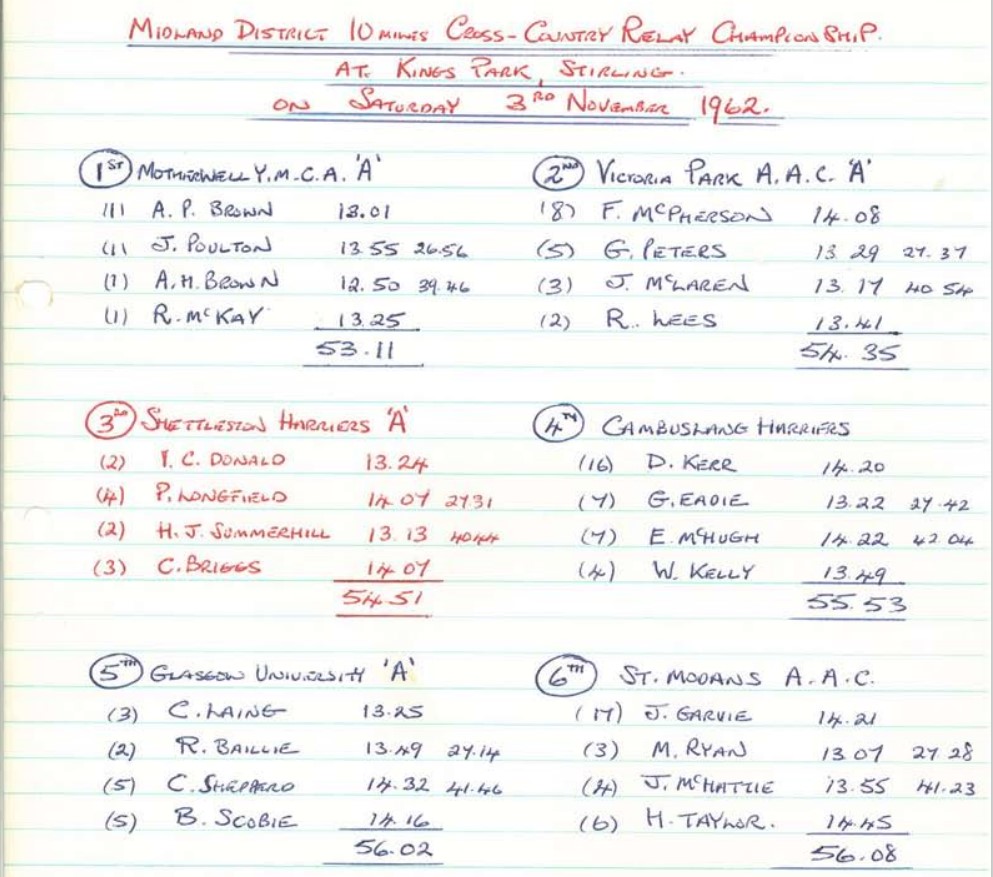
Mike Ryan had the third fastest time of the day and the team above had a good blend of youth and experience – Jimmy Garvie had a few years of running experience behind on the road and on the track, and McHattie was at the other end as a Junior man while Mike Ryan was an experienced medal winner for the club on the track, road and country with Taylor a solid club runner. The District Championships were held at Strathleven again on 19th January 1963 and again Mike led the team home when he finished eighth. Jimmy Garvie was 41st, J Gray was 81st, Charlie Meldrum (now a PE Teacher at Riverside HS in Stirling) 88th, G Pearson 93rd, I Howden 105th and AT Roy 114th. The Boys race was won by J Fleming of the St Modan’s team with J Sloan close up in fourth with D Aitken eighth. Their 13 points won the team competition from Springburn who had 20. Withe 7 finishers in the senior race, the club had more than any year for some time and with first individual and first team in the boys race, they had good cause to celebrate.
The National Championships were held at Hamilton on 3rd March, 1963 and the in the Junior Men’s race Ryan was second and McHattie 13th. In the Youths event there were several ‘new boys’ who would prove to be excellent athletes. Tom Brown finished fifth, less than 20 seconds behind the third placed runner in a race won by Ian McCafferty from Ian Young of Springburn, R Carroll of Edinburgh and Jim Brennan of Maryhill. The next club finisher was Walter Eadie in 18th and he was another talented runner who led the Strathclyde University team for several years, Alastair Macfarlane was 40th in his first ever National at Hamilton and he would go on to win many races on track, road and country including the Scottish Marathon Championship, and Marshall Prentice in 46th completed the team which finished fifth. In the Boys race, Jim Fleming finished fifth, D Aitken was 13th, I Sloan 19th, A Roberts was 38th, T McAllister 59th to have the team finish third and go home with medals from the Scottish National Championship.
Mike Ryan was running well and Willie Fleming was still running, there was a very good Under 17 team led by Tom Brown and young Jim Fleming was coming through in the Boys Under 15 age group. Something else was happening – Allan Faulds was running very well for Glasgow University and in March 1963 he joined his local club – St Modan’s. It was a massive gain for the club.
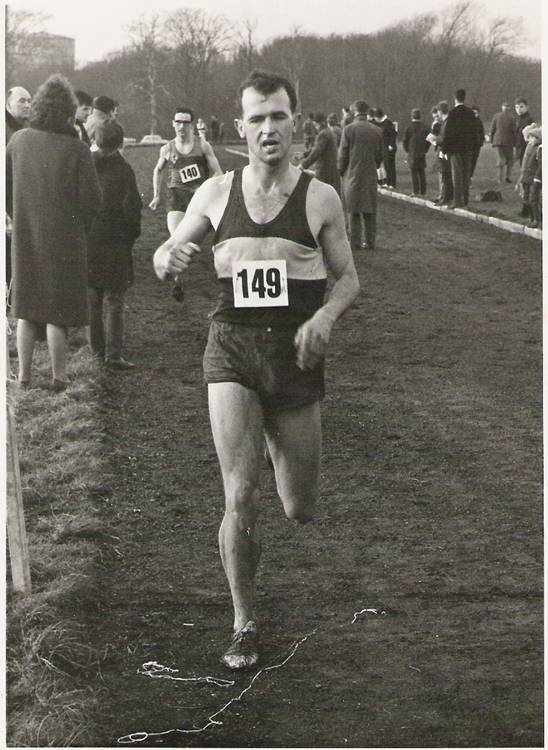
.Allan Faulds winning the Springburn Cup from Mike Bradley, Paisley Harriers
Allan led them to second place in the Springburn Cup race almost immediately thereafter. In 1963 there was a Central League for young athletes run by a group containing Alex Naylor (Shettleston), Bert Winter (Bellahouston) and others and St Modan’s had athletes taking part in it. There was no limit on the numbers entered by any club but only the first two scored any points. Entries across the board were not required. There was also a winter league and on 2nd March St Modan’s had athletes entered for the meeting which took place in Pollokshaws. In the Senior Boys race, J Fleming won from Eddie Knox of Springburn by 17 seconds, with D Aitken third and since they also had the fourth finisher, they won the team race. In the Youths race, Tom Brown was second to Ian Young of Springburn being beaten by 13 seconds. The team was second with 20 points. Springburn (10) and Victoria Park (26) were first and third.
For the club, the track season again had its moments of triumph . The Western District Championships were held on 25th May at Westerlands and J McHattie was second to Lachie Stewart in the Three Miles with Billy Murray of Glenpark in third and Hamish Cameron third in the Hammer in the Senior events. Tom Brown was second to Hugh Barrow in the Junior Mile. On 1st June at the Lanarkshire Constabulary Sports at Shawfield, Tom Brown won the 880 yards and J McHattie won the Mile. At Falkirk on 27th July, George McLachlan won the special invitation 100 yards. In the Open 220 yards, DV Smith of St Modan’s won in 22.4 seconds from 14 yards handicap. Later in the season, at Shotts on 7th September, Tom Brown was third in the Two Miles behind Ian McCafferty and Jim Johnston (Monkland).
The West District Relay was held on October 26th, 1963 at Stirling and were responsible for the programmes and the trail stewards – these might have weakened the teams but were an indicator of a club with fairly healthy numbers. The club did fairly well. Ryan was fourth fastest individual and the team finished sixth. The other runners in the team were McHattie, Prentice and Pearson. There was a second team of Murray, Meldrum, Rutherford and Howden. Reserves were Garvie, Galbraith, Gray and Faulds. There were over 60 teams in the event.
Allan Faulds kept running well in the colours of Glasgow University but young Walter Eadie was also running well – but in the club’s colours. On 2nd November in the Garscube Harriers Open Races for younger age groups, Walter was third fastest Youth and the team finished second behind Springburn. Eadie was also second fastest behind Knox on 23rd November in the Clydesdale Harriers Youths race. Duncan Middleton of Springburn was third and Tom Brown was fourth for St Modan’s. The race incorporated a Ballot Team competition to give all runners the opportunity to win a team prize and Tom Brown was in the winning team with Eadie in the second placed team.
Away from the competition arena, at the SAAA AGM on 21st December, 1963, Joe Walker was elected Vice-President to the Association. He would go on to be President for 1965/66.
The Midlands Championships were held on 18th January at the Renton Dumbarton. The St Modan’s Youth team of Brown 5th, Eadie 6th, and Fleming 8th were second to Springburn’s team of Middleton 1st, Knox 3rd and McLean 12th. In the Boys race, R Clarke was 9th, I McShane 17th, and I Harvey 28th. Nationals were again held at Hamilton at the start of March and there were only three Boys – I McShane 65th, R McLean 80th, I Harvey 87th – when four were required for a team. There was a team of Youths, a GOOD team too – of W Eadie 4th, T Brown 5th, J Fleming 19th and A Macfarlane 31st – which finished second 10 points behind Edinburgh AC and 38 in front of Kirkcaldy YMCA. Marshall Prentice had by now gone to Glasgow University and was running for them and finished 69th. Allan Faulds was also running for Glasgow University and was 14th in the Senior race. Only G Pearson ran in the Senior Men’s race and finished 157th. Charlie Meldrum was among four noted as ‘Failed to finish’.
How was the club faring on the track in summer ’64? They were competing in the Track League (three clubs, each scored against the other two making it three two-club competitions) and the Glasgow Herald of 11th May reported like this.
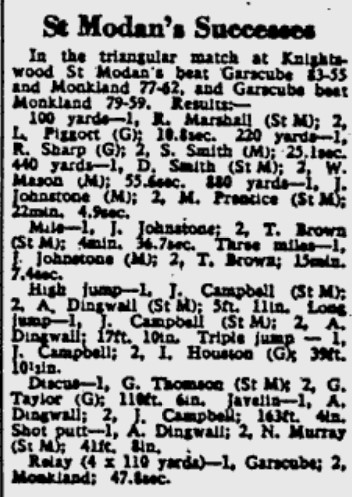 A very good start to the summer with two victories out of two and a significant number of victories. One week later in a similar format match, they beat RCST by 58 to 49, and Glasgow University 58 to 44. On 23rd May, in another three-club league contest they defeated Maryhill Harriers by 83 to 56, and Forth Valley 77 to 60. Despite all this league success which meant turning out many athletes week after week, there was a disappointing number of club members among the medals at the West District Championships at the very end of May. Tom Brown, second in the Junior Mile was the sole medallist. Walter Eadie was performing well for the RCST and won the Universities Championship Three Miles in 15:07.4 from Jim Bogan of Glasgow University on 6th June. Distance seemed no object to Tom Brown who travelled to Kinlochleven HG on 4th July where he won the mile handicap race from Knox of Shettleston.
A very good start to the summer with two victories out of two and a significant number of victories. One week later in a similar format match, they beat RCST by 58 to 49, and Glasgow University 58 to 44. On 23rd May, in another three-club league contest they defeated Maryhill Harriers by 83 to 56, and Forth Valley 77 to 60. Despite all this league success which meant turning out many athletes week after week, there was a disappointing number of club members among the medals at the West District Championships at the very end of May. Tom Brown, second in the Junior Mile was the sole medallist. Walter Eadie was performing well for the RCST and won the Universities Championship Three Miles in 15:07.4 from Jim Bogan of Glasgow University on 6th June. Distance seemed no object to Tom Brown who travelled to Kinlochleven HG on 4th July where he won the mile handicap race from Knox of Shettleston.
The SAAA Championships were held on 27th June Again Tom Brown was second in the Junior Mile and H Cameron won the Junior Hammer Throw. Cameron was really in form when on 8th August at the AAA’s championships at Crystal Palace he won the British Hammer Championship by four feet with a best of 183′ 6 1/2″ . The track season ended at the local Highland Games with Tom Brown winning the 880 yards and finishing second to Ian McCafferty in the Mile. It was then on to the Cross-Country for 1964/65.
In the McAndrew Relay at Scotstoun on 3rd October, 1964, the club achieved its highest position yet when it was eighth, 14 seconds behind promoting club Victoria Park. Motherwell won the race. The test of the squad came at the start of November when the took part in the Midland District Relay. This was really the first time Allan Faulds had run in a championship for the club. The team of Tom Brown (13:04), George Jackson (13:15), Allan Faulds (12:50) and H McHattie (13:47) finished third – the first time they had won medals in a major championship as a senior team. George Jackson was another interesting runner. He was a member of two clubs – a member of another club affiliated to the SAAA, he had to join another to run cross-country under SCCU rules. The National was held on 16th January at the Renton and unfortunately, the club could only turn out four runners in the Senior race. These were Faulds (10th), Meldrum (33rd), M Coyne (91st) and G Pearson (105th). There were no Youths and only one one Boy, W Adam who finished third. Not a good championship.
In the National at Hamilton on 27th February, 1965, there were no runners from St Modan’s in any of the races at all, although in the Junior race Walter Eadie finished fifth in the colours of Strathclyde University and won a place in the Scottish Junior team for the ICCU Championships in Belgium. There were five entered on the programme for the senior race- Faulds, Coyne, Jackson, Meldrum and Pearson, two juniors – Brown and Macfarlane, one Youth Fleming and no Boys at all. Where was the club going from here? They had many good runners and a complete Track & Field team in the summer just gone. What was happening?
Mike Ryan emigrated to New Zealand in 1965 and subsequently won bronze medals in the marathon in the 1966 Commonwealth Games and the 1968 Olympic Games.
There were no medals for the club at either the West District or the SAAA Championships on 25th June, 1966. In fact it was difficult to find nems of club members at any meetings that year including the Dunblane Highland Gathering, and there was no reporting at all of the track leagues.
The following winter started with the McAndrew Relay at Scotstoun on 2nd October and the team finished ninth with Allan Faulds turning in the fifth fastest time of the day. Next relay was the Midland District event on 30th October at Stirling. The team did exceptionally well and finished third for the second successive year. Runners this time were Jackson 13:44, Meldrum 13:57, Faulds 12:57 and Brown 13:41. Only the formidable Motherwell and Shettleston teams were in front of them. They had B and C Teams out which finished 17th with J Fleming, G Pearson, K Henderson and F Flynn) and 32nd (M Coyne, J Murray, J Talbot and J McHattie). Results from the Midland Championships on 15th January 1965 are not available but we do know that Allan Faulds was third finisher – ne place ahead of I McCafferty of Motherwell YMCA.
The National of 1966 was quite significant for followers of St Modan’s AC. There was no St Modan’s AC team entered but there was a Stirling AC team in the programme. Their senior runners were

Yes, St Modan’s had changed their name. to Stirling AC which would be a short lived club. Their athletes would go on have good careers with other clubs but Scottish athletics was diminished – as it always when a good local club disappears from the scene. It had done well by the people of Stirling and had produced in its short life since 1947 two British track & field champions – George McLachlan and H Cameron, and several Scottish champions in the mile, the 120 yards hurdles and the hammer throw as well as cross country champions across all the age groups. The question of why it changed is asked, and the reply is that the club stopped using St Modan’s HS as its headquarters and moved elsewhere. The new name maybe had added advantages.
1947 – 52 1952 – 60
